Making friends with dragons and monkeys in mythical Indonesia
Chris and I had just left the relaxation of the Gili islands, off the coast of Lombok, Indonesia, to embark on the second half of our Indonesian adventure. A day of travel left us back in Bali, and the next morning, we hopped on an early flight from Denpasar to Flores Island. More specifically, we landed in Labuan Bajo, the jumping-off point for tours of the legendary Komodo National Park, home of the world’s largest lizard: the Komodo dragon. Is it really a dragon, you might wonder? It does not breathe fire, but this apex predator is a gigantic, cannibalistic, killing machine and, with a max size of 3 meters, it is 100 percent worth a visit to this remote park.
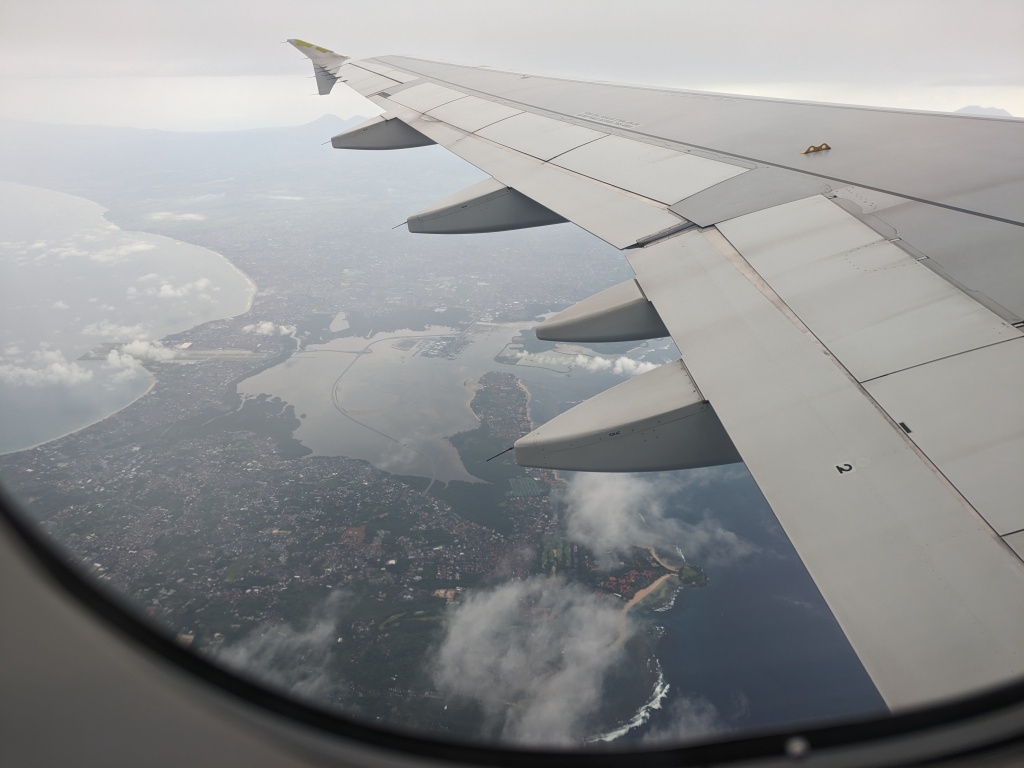
Labaun Bajo:
Reaching Komodo National Park first requires a domestic flight from somewhere else in Indonesia. It’s a short ride, only a couple hours from Bali, to a small airport that lies within walking distance of the nearby capital town of Labuan Bajo. Labuan Bajo is known locally as the city of sunsets, and did we ever get some good ones! This fishing town is small and charming, with surprisingly developed roads and sidewalks. Tourism to Komodo Park has obviously brought in a lot of money. As we visited in the rainy season, the town was quiet enough (although last-minute accommodations were a bit tricky to find), but I imagine this little place can get hectic in peak season.
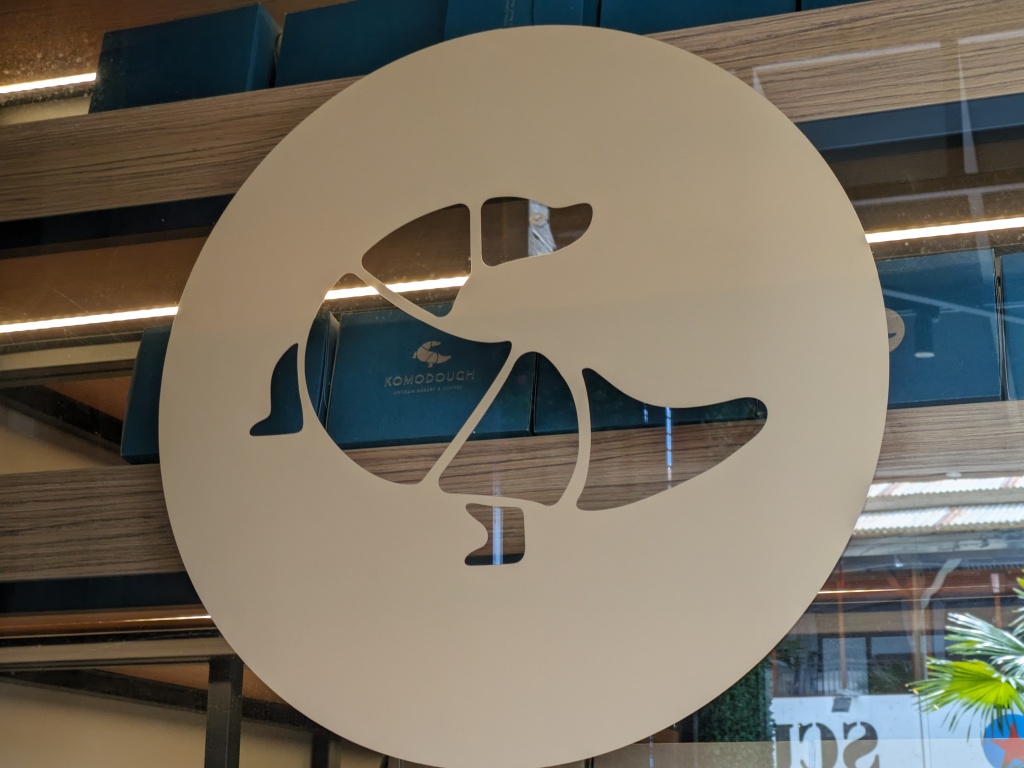
In addition to spotting the infamous Komodo dragon, our primary reason for visiting Komodo Park was to spend 4 days on a scuba diving live-aboard ship. We had spent hours and hours spreadsheeting to settle on a location, and finally picked a ship called the Amalia, operated by Uber Scuba, a local dive shop. As live-aboard dive trips can be pretty pricey, and this was a rare splurge in our travel budget, we were careful in our selection, and were absolutely not disappointed.
After our flight landed in the morning, we grabbed breakfast at an amazing little breakfast place, checked in for our diving trip, set to start the next morning, and explored the town.

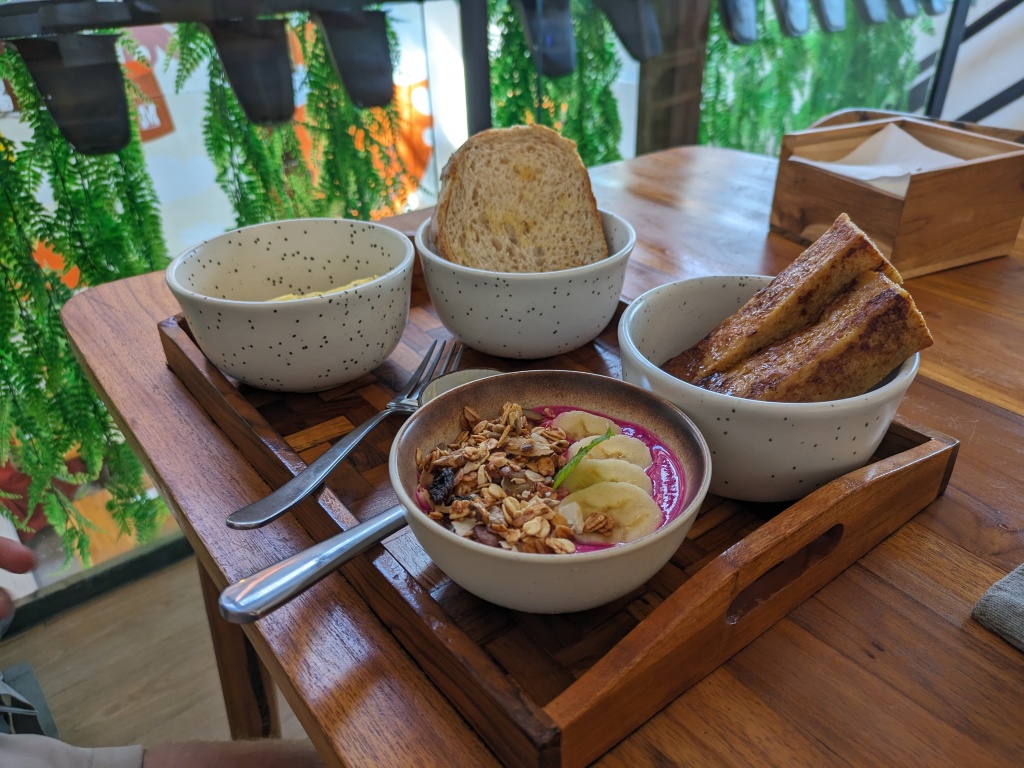

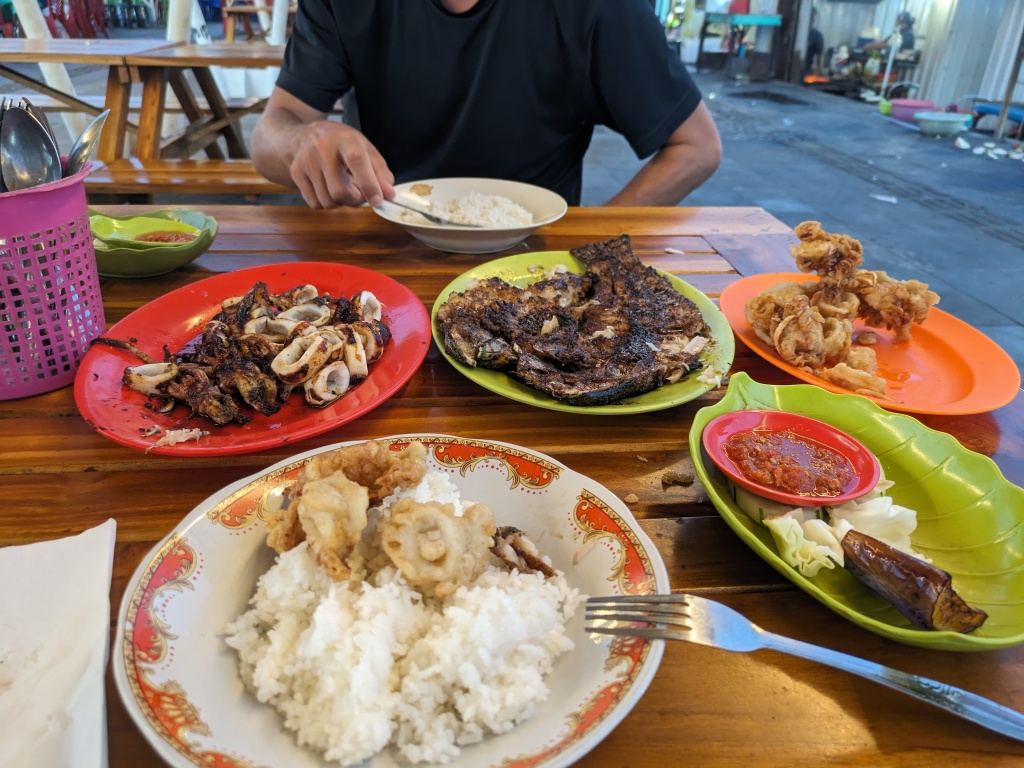
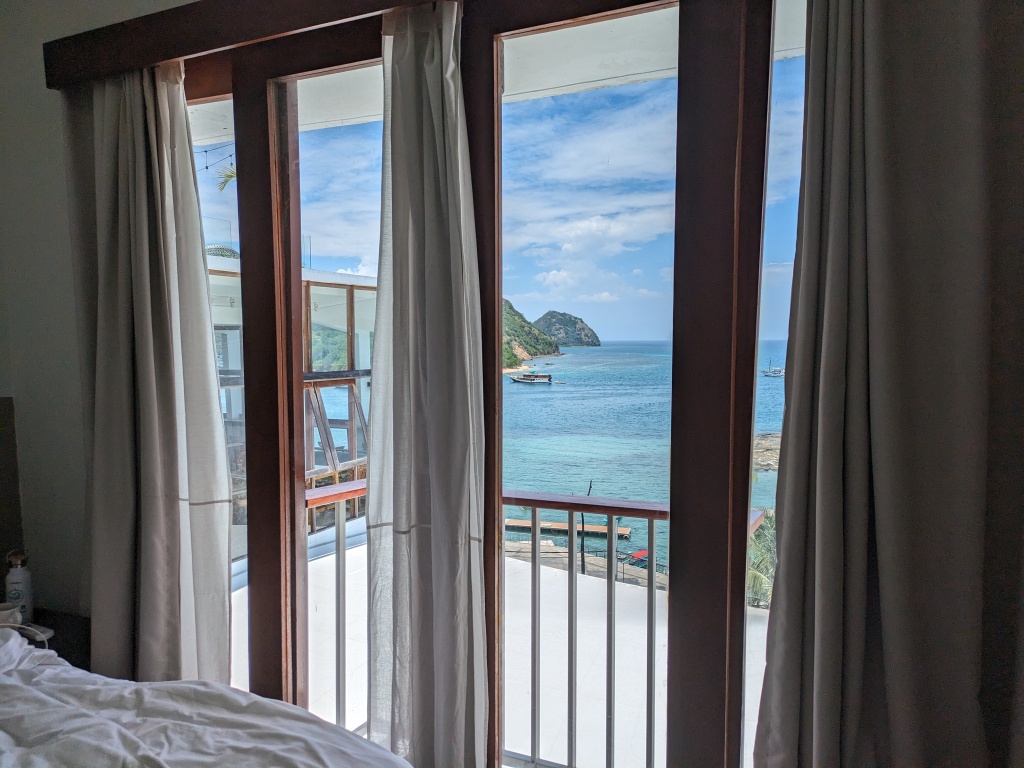
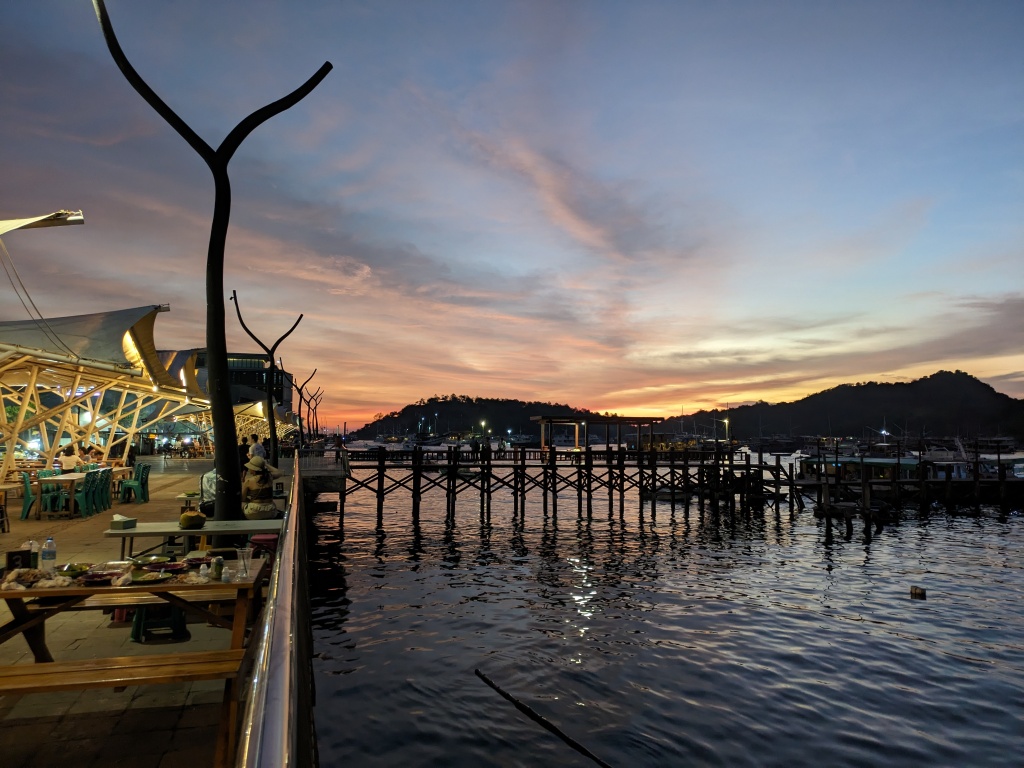
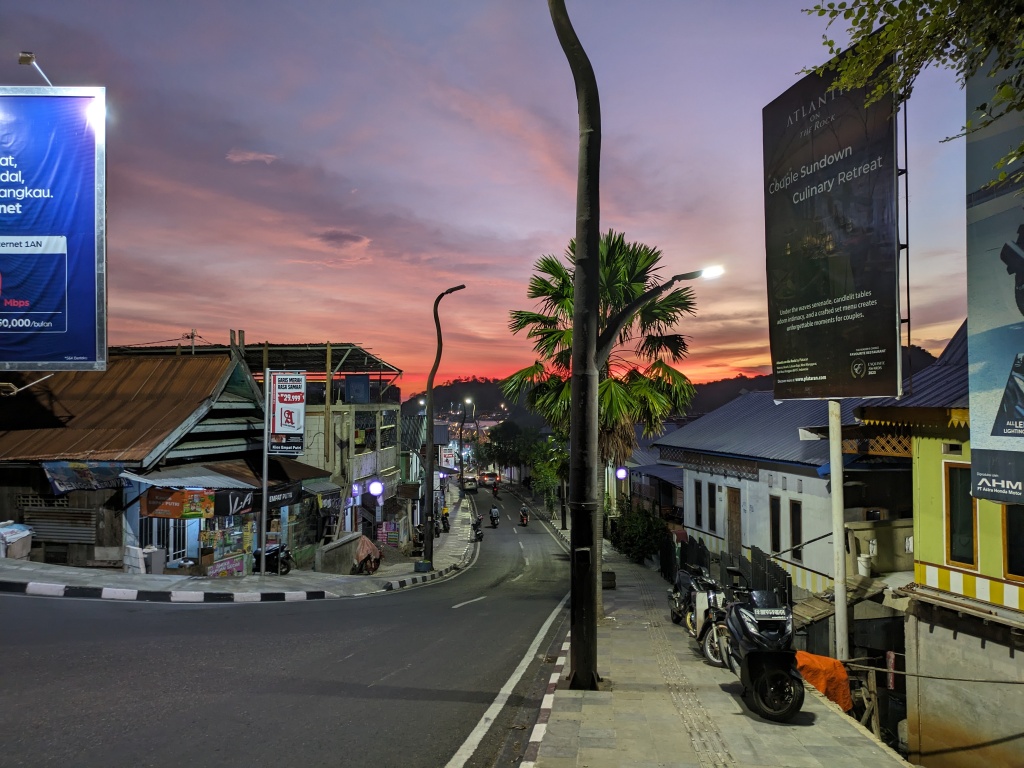
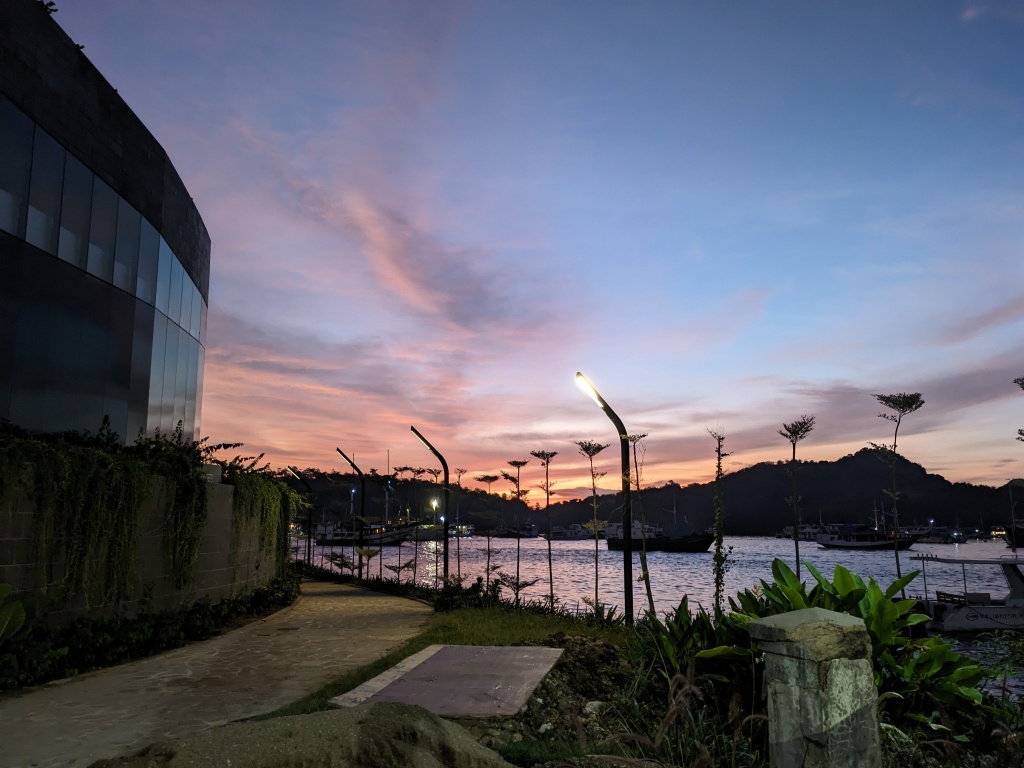
Komodo National Park:
We embarked on the live-aboard ship Amalia on a bright morning from the Labuan Bajo harbour. One of Amalia’s two small tenders (a small boat that runs back and forth from a larger boat) picked us up from the dock and brought us aboard, where we received a delicious welcome-drink and snack as we listened to an orientation from the cruise director.
While Amalia can accommodate 11 clients, our group was only 7 people: Chris and I, 4 Germans, and 1 crazy Italian. We split into two dive groups, each led by a Divemaster. Everyone on the boat was very experienced – I was by far the least experienced. Diving in Komodo Park can be quite tricky due to incredibly strong currents. Divers should have at least Advanced Open Water certification, something like 20-30 dives under their belts, and some experience with currents. Komodo is situated at the confluence of the Indian and Pacific oceans, meaning the currents can be very intense throughout the day as the oceans drain into each other. To top things off, we visited the park during the full moon, which made the waters extra wild. But its location also means that the diversity of life is outstanding: Komodo is home to 25% of the world’s fish species, and 15% of its coral. The park is split into three zones: north, central, and south, and with vastly different diving conditions throughout, it means that excellent diving can be found year-round somewhere in the park.

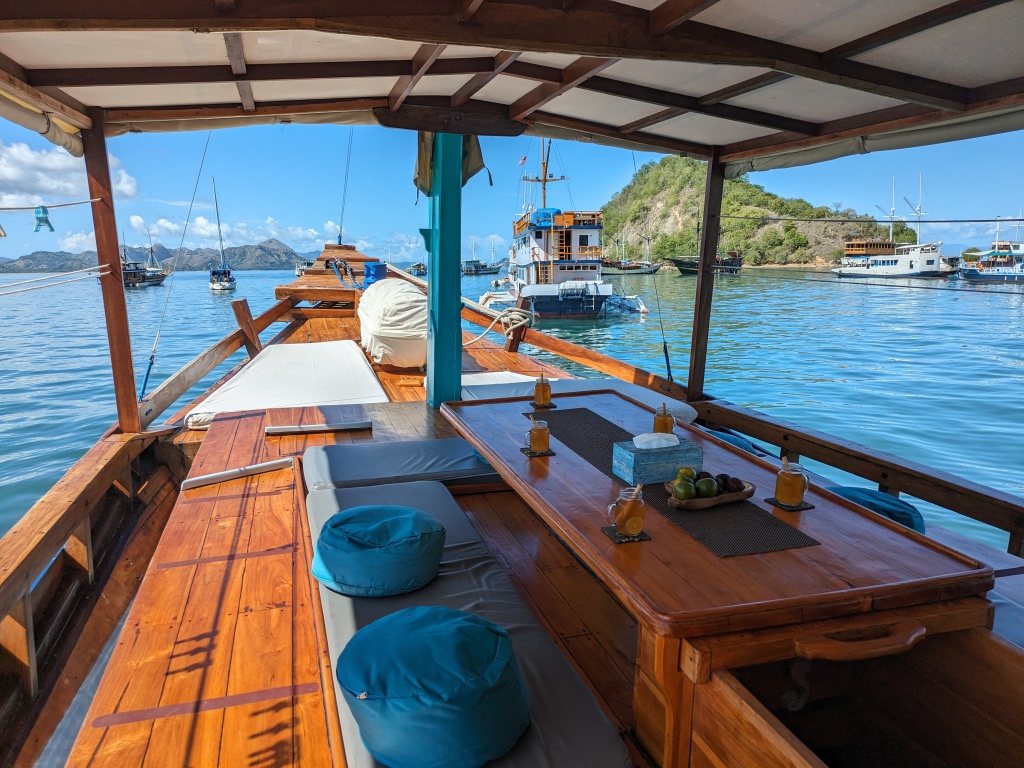
Our experience aboard Amalia was absolutely amazing. Our two Divemasters and all the support staff on board (about 10 people!) were phenomenal. The dive briefings were informative, and our gear was set up and tanks refilled almost invisibly in the background. The boat, beautiful natural wood and teal, was kept squeaky clean and thoughtfully laid out for days at sea, and the non-stop food was wonderful. Some food highlights: fresh-baked bread, tropical fruits, fish curry, soto ayam (chicken soup), nasi goreng (fried rice), fried bananas with honey, banana cake, chocolate mousse, carrot cake, and daily fresh pressed juice. The cuisine was a mixture of Indonesian and western (we had some spaghetti and scrambled eggs with avocado toast), but all of it was freshly prepared on the boat by our tireless chef.
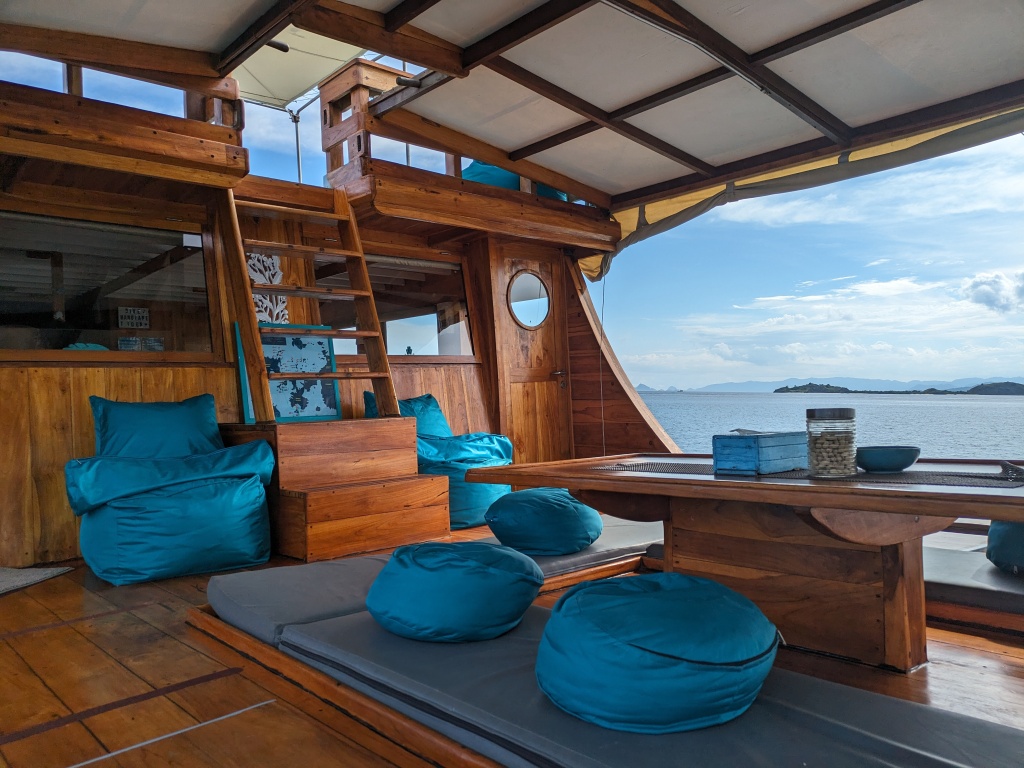
Chris and I had a private double cabin with its own bathroom. The bed was comfy, and the private bathroom with a small freshwater shower was exactly what I wanted after a long day of salty dives. While the boat is not air-conditioned (many live-aboards do have AC – Amalia chooses not to in order to avoid running a noisy generator all night), I was quite cool with the little window open and the above-bed fan going.
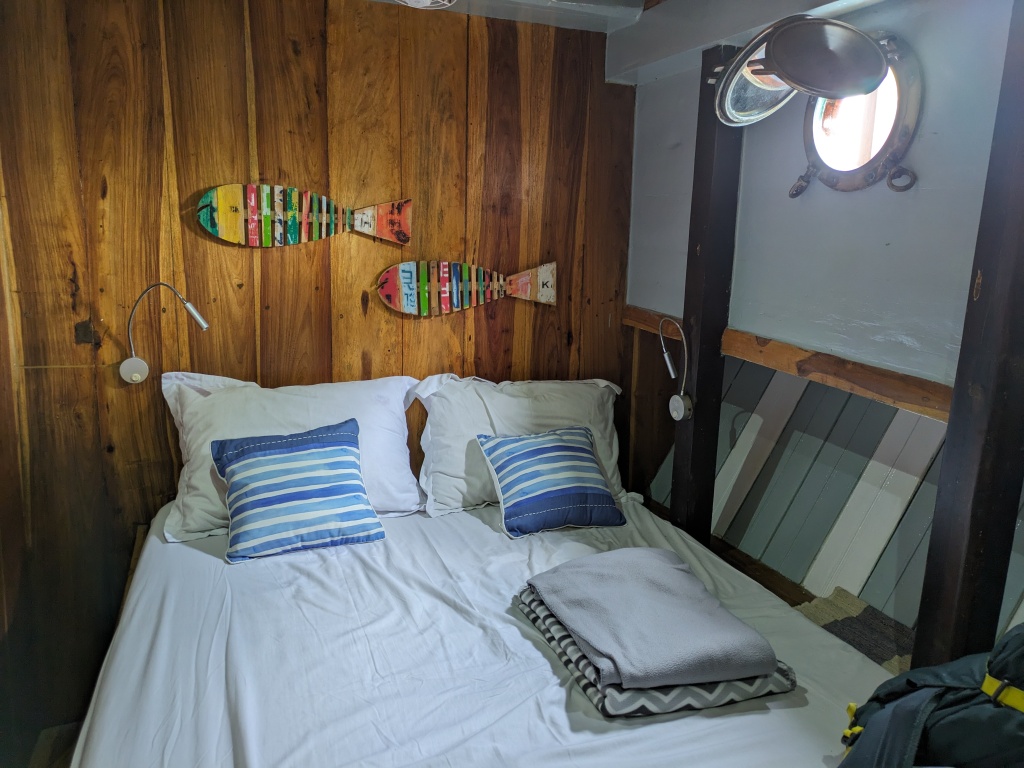
A typical day on the live-aboard started early, around 6 am. We would get up, have a light bite (toast, cereal, tea, coffee), listen to the morning dive brief, then be on the dive deck gearing up for 6:30 am. We’d hop into our two small tender boats from here, which would bring us directly over the dive site, where we’d enter the water. After a 50-60 minute dive, the tenders would pick us up and bring us back to Amalia. We’d take off our gear, and have breakfast on the main deck while driving to our next dive site. After a break, we’d get back in the water for dive 2. Another break, including lunch, would follow as we cruised the waters of the park, and then a third dive in the afternoon. Snacks and dinner would follow. We even did one night dive and one sunset dive.
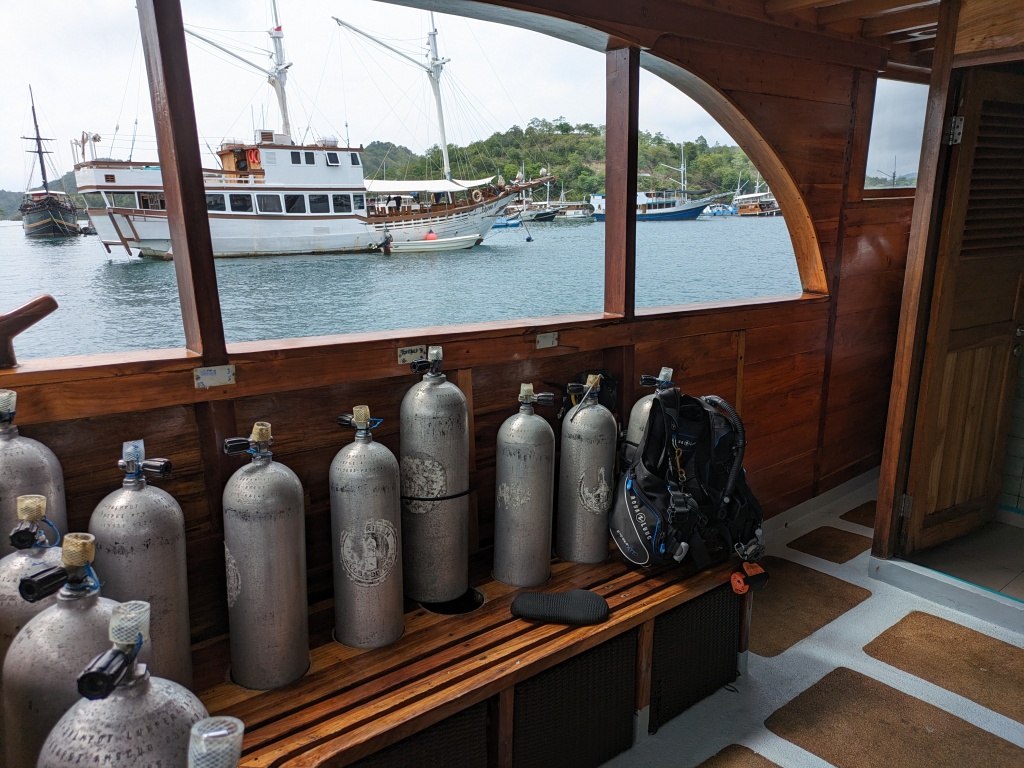
While we saw many cool creatures under water, some the highlights included devil rays, tons of white-tip reef sharks, blue and yellow ribbon eels (fondly known as ‘derp’ eels), crocodile fish, giant green turtles, and one incredibly rare frog fish. The best creature by far, however, was the famous manta ray. With a ‘wing span’ of 4-7 meters, we were very keen to catch a glimpse of these gentle giants. Fortunately, we had arrived in Indonesia in manta season; these massive rays usually stay far below the surface where the water is cold, but at certain times of the year, they follow currents upward, and can be spotted hanging out at cleaning stations around 5 meters depth.
We saw most of our mantas at the dive site named, unsurprisingly, Manta Alley. We saw maybe half a dozen in total. They glided in gentle circles near the surface as fish came to clean them. We were able to plant ourselves in the sand and simply watch for a long time. They seemed curious about us too, coming quite close for a better look.
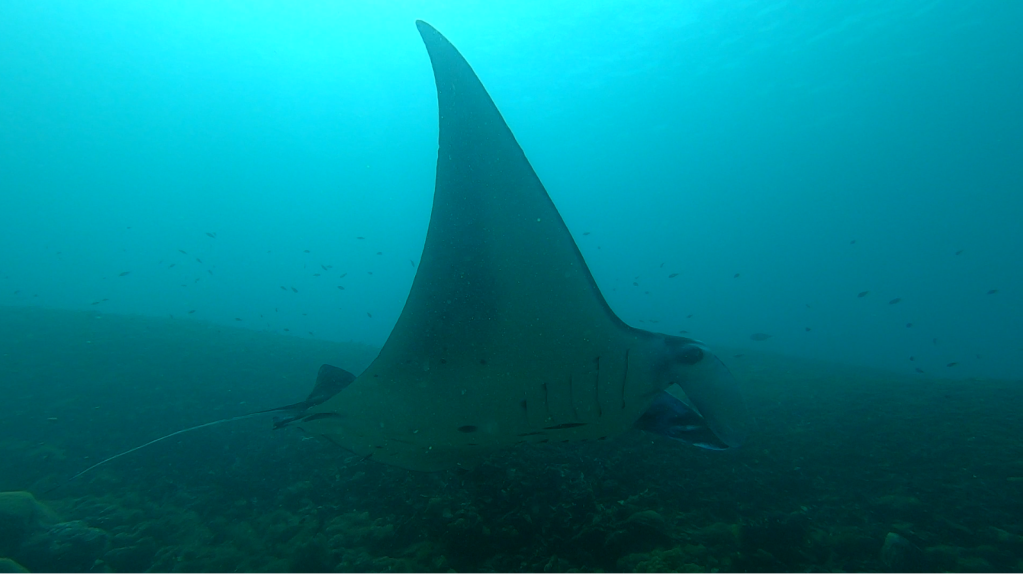
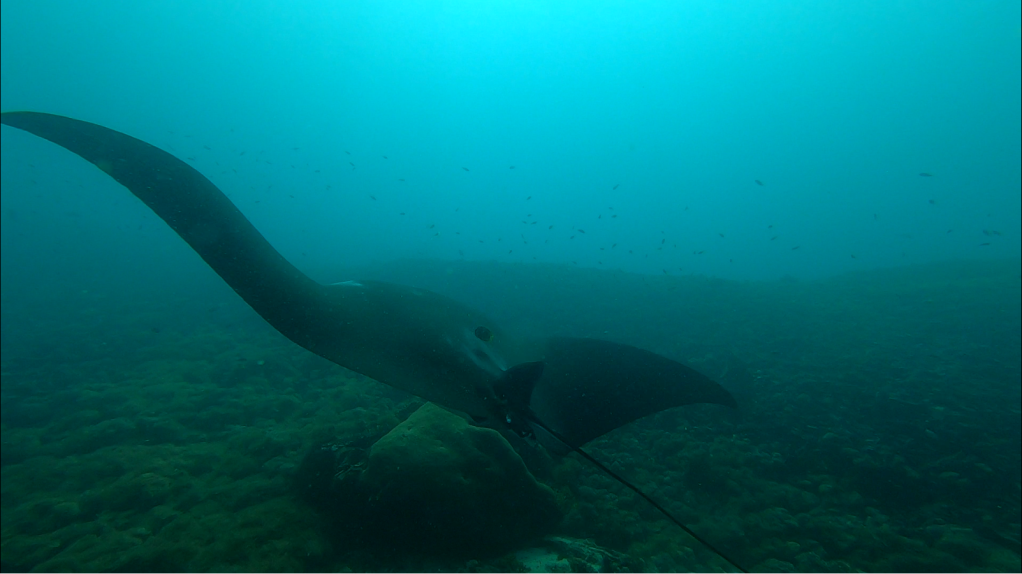
In total, we completed 12 dives over our 4-day trip. As we were completely immersed in diving, I learned an incredible amount, and got in the best diving I have ever experienced. While our best dive was probably in Manta Alley, hanging out with a couple mantas, half a dozen reef sharks, and a huge turtle, the most beautiful dive site was at Loh Sera, which was jam-packed with stunning red coral and brilliant tropical fish. But our most memorable and thrilling dive was definitely at Batu Bolong.
Batu Bolong is perhaps the most famous dive site in Komodo, and frequently makes lists of the best dive sites in the world. As a lonely rock pinnacle in the middle of two oceans playing tug-of-war, the reef-coated rock offers a feast for marine life, and consequently features astounding biodiversity and density. As we dropped into the water, however, we ran into the wildest current we had ever experienced. Just minutes into the dive, we were clinging to the rock for dear life, fighting against being swept away. As we had learned in our pre-dive briefing, currents at the edge of the rock were known to sweep down, pulling divers rapidly to potentially fatal depths, so remaining in position was critical. Even the sea creatures were struggling. I have never in my life seen a turtle move so fast to remain stationary, and a struggling reef shark, positioned about a foot in front of Chris, nearly hit him in the face in its effort to fight the current. We realized pretty quick that the situation was completely unmanageable; it was time to abort the dive.
But even as we clung to the rock, boulders the size of microwaves would break loose, ripping past the faces of other divers as they held on, but fortunately missing a full-on strike. Turning your head even slightly could result in a regulator being torn out of your mouth, and one of our group members nearly lost a fin (a lucky catch by another diver saved it). Then began a phenomenon we later referred to as ‘the washing machine’. The current began to flip direction. It would blast us horizontally for several minutes, then after a short lull, lasting only seconds, would suddenly blast us down, then up, then 180 degrees from start. Rapid adjustment of buoyancy and holds on the rock was required to keep from being torn loose. The constant switching, finding ourselves upside down frequently, made us feel like clothes on the spin cycle.
Our Divemaster signaled the intent to surface, and we began slowing clawing our way up the reef, stopping to wait out particularly strong swells of current, and moving only during the brief seconds of calm. We eventually made it up. Chris and I surfaced first, and endured a few tense minutes as the tender boat picked us up, waiting for the rest of our group to arrive. Happily, everyone surfaced shortly afterward. The ‘washing machine’ was the topic of conversation for the rest of the day however – a narrow miss to be re-lived, dissected, and analyzed. One of our Divemasters, an experienced instructor with literally thousands of dives under his belt, told us that, in 7 years of diving at Batu Bolong, had never seen it like that, and this was, in fact, the second craziest dive he had ever experienced (the first involved getting unexpectedly pulled to 60 meters depth and crashing through the ceiling of an underwater cave…).
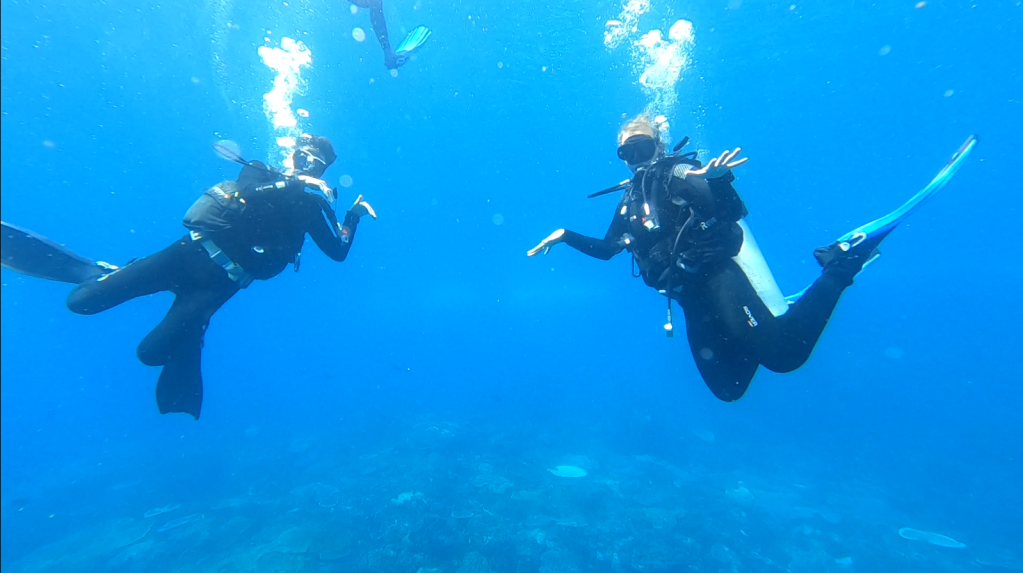
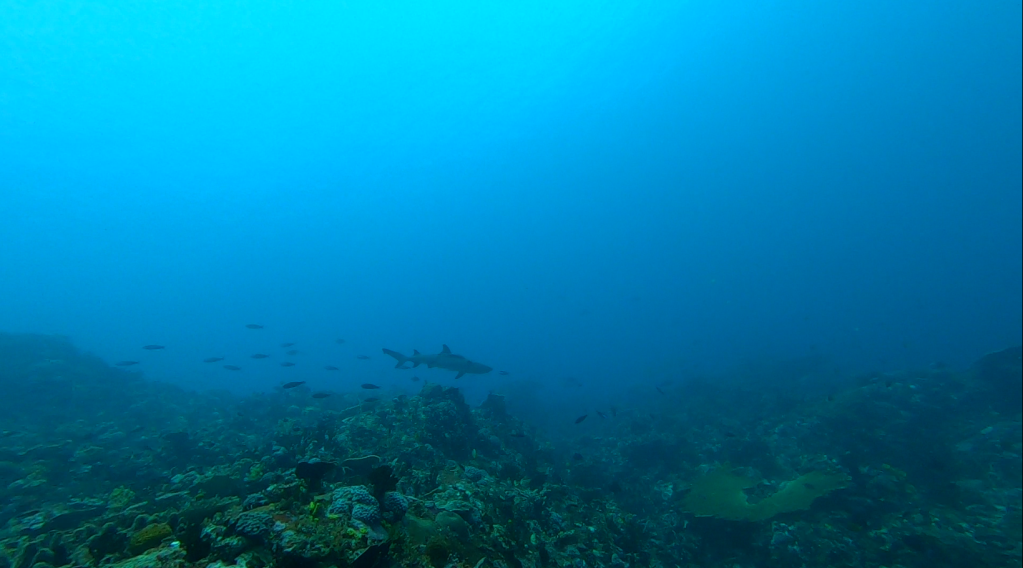
In addition to incredible diving, the trip also included land-excursions to Komodo and Padar Islands. On our third day, we got the chance to disembark on Komodo Island itself, and meet the infamous Komodo dragons. We met a local guide at the park entrance, and he proceeded to tour us through the park, looking for lizards as we went.
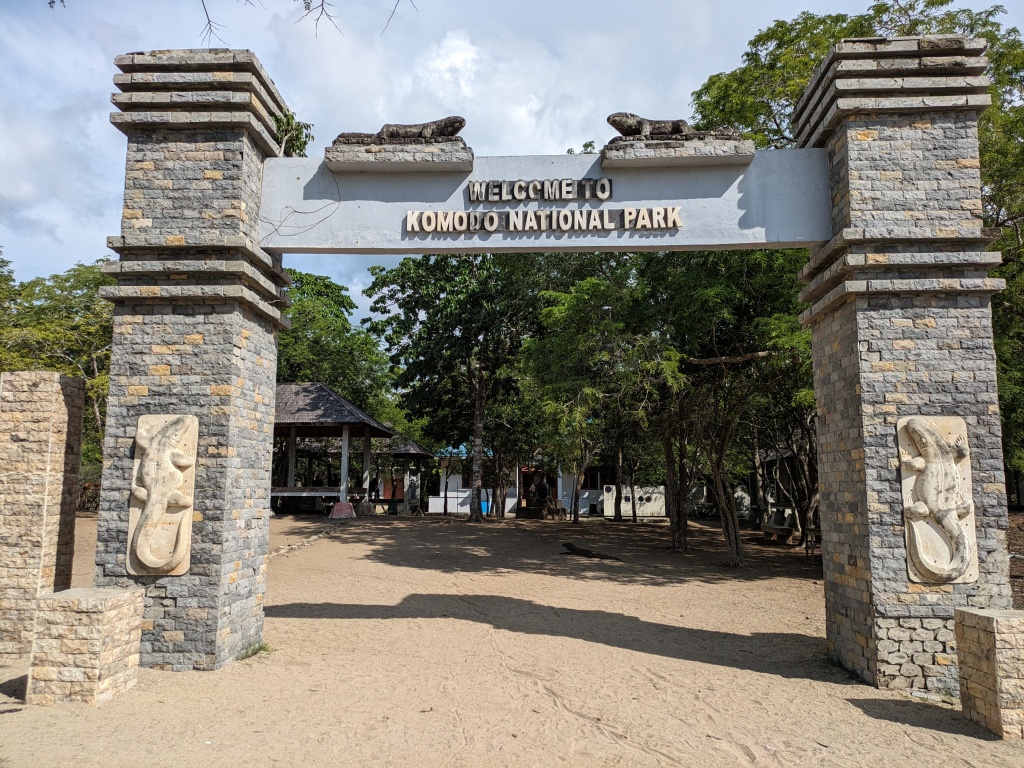
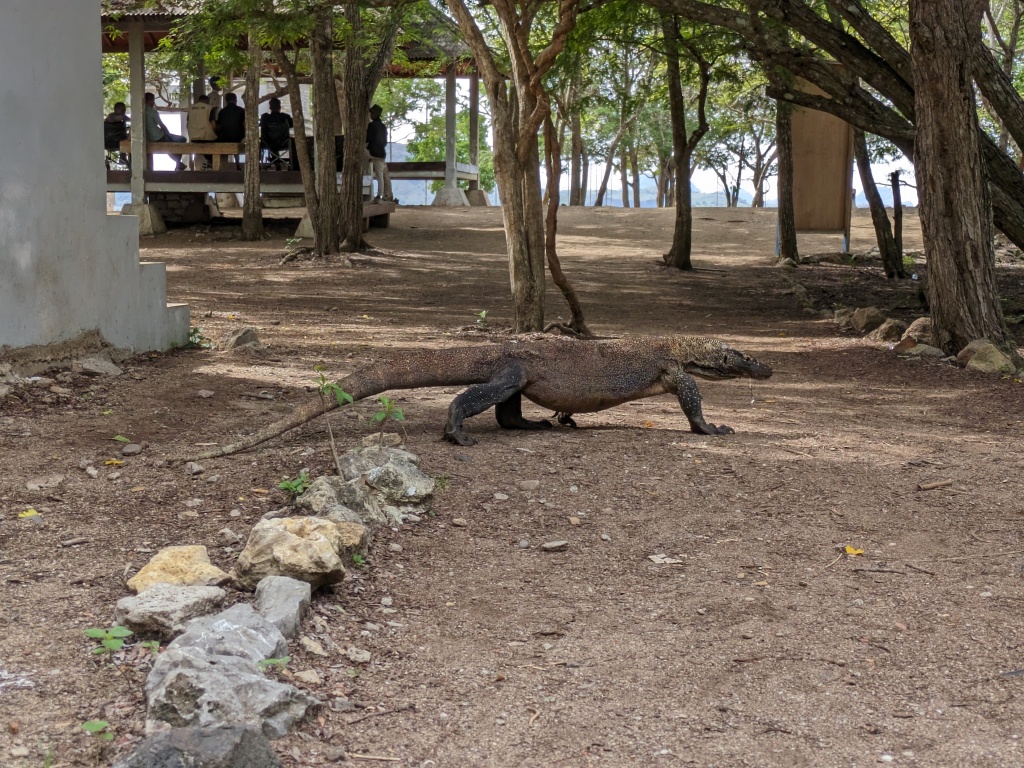
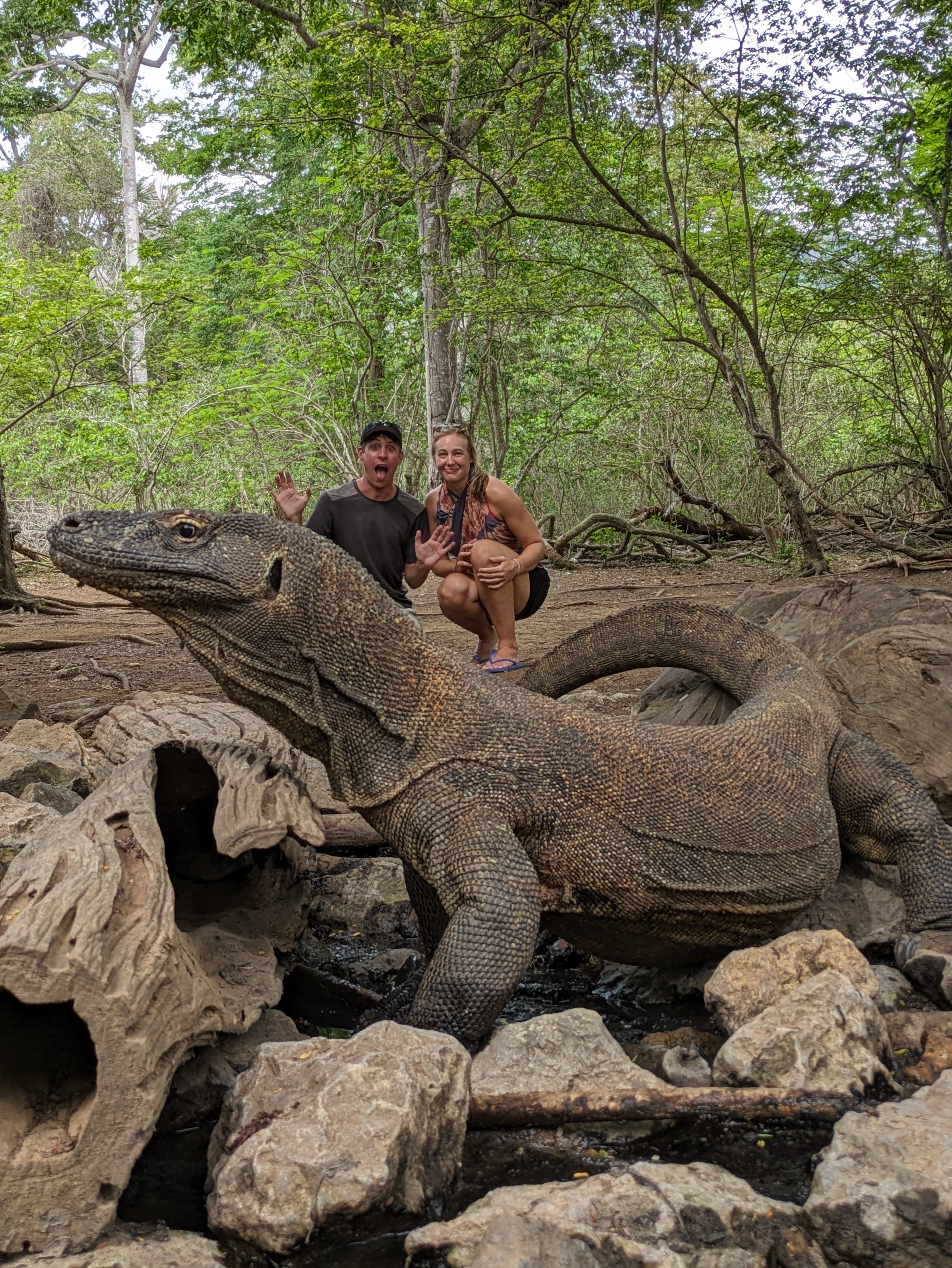
As we walked through the park, we noticed that many trees were full of small holes near the top. Our guide informed us that the baby dragons lived up there. Komodo dragons are cannibals, and will eat their young (even their own!). In order to survive, the juveniles climb up trees and create holes in which to sleep, safe from the bulky adults who are now too heavy to climb. They are viscous and fascinating creatures.
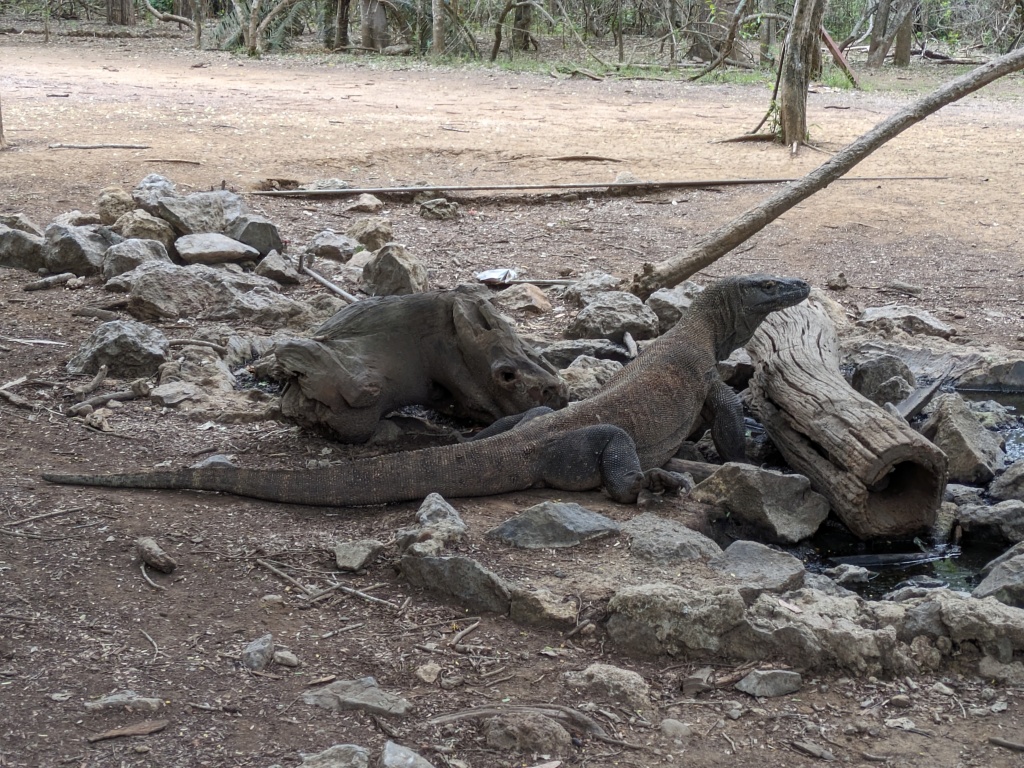
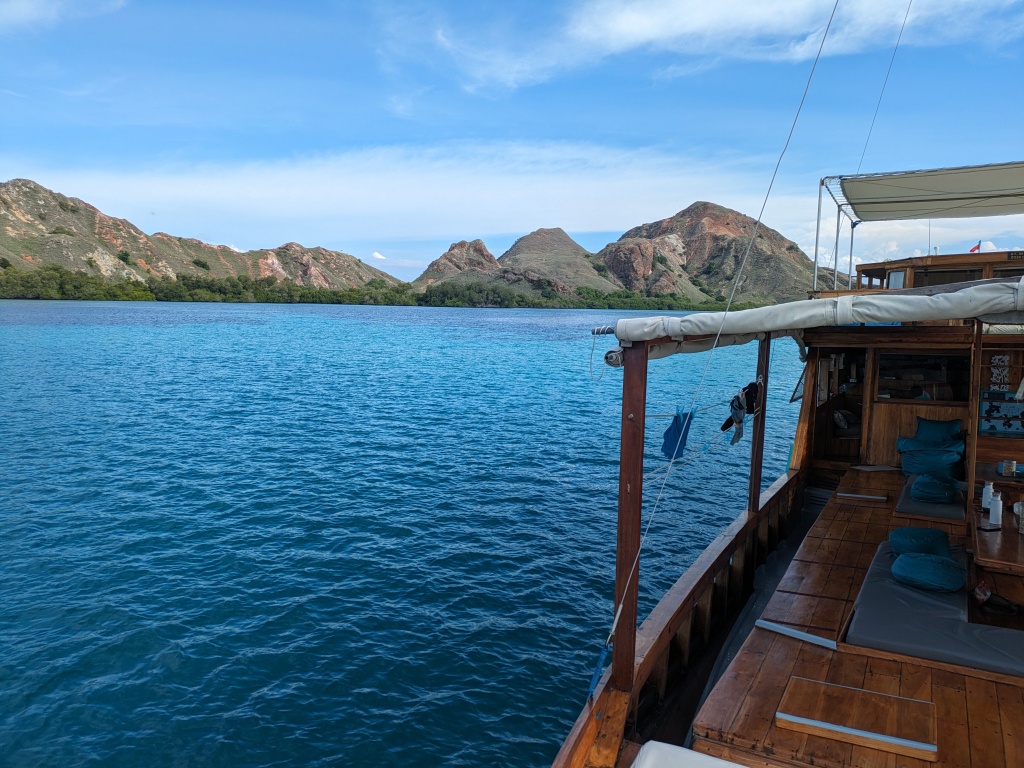
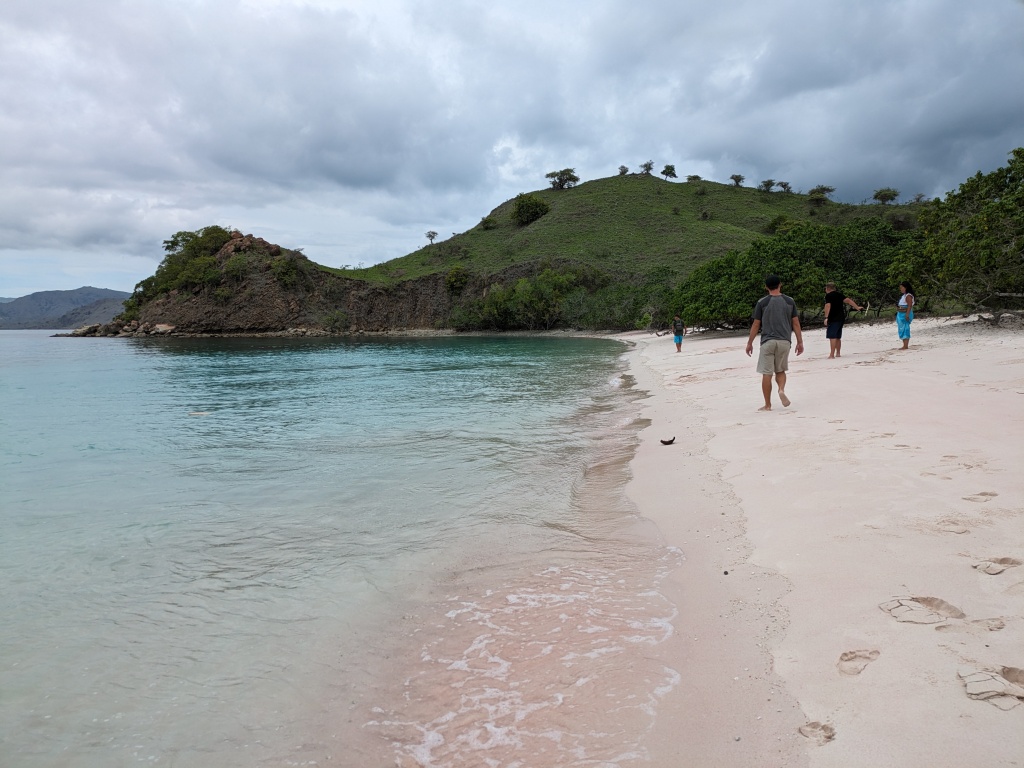
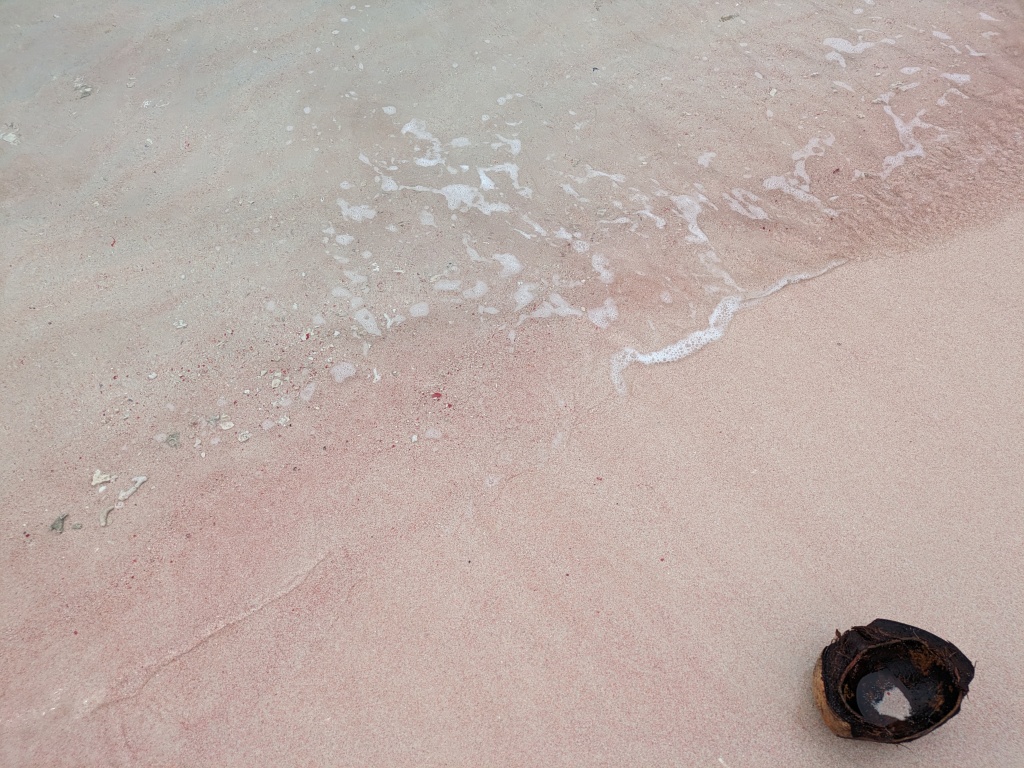
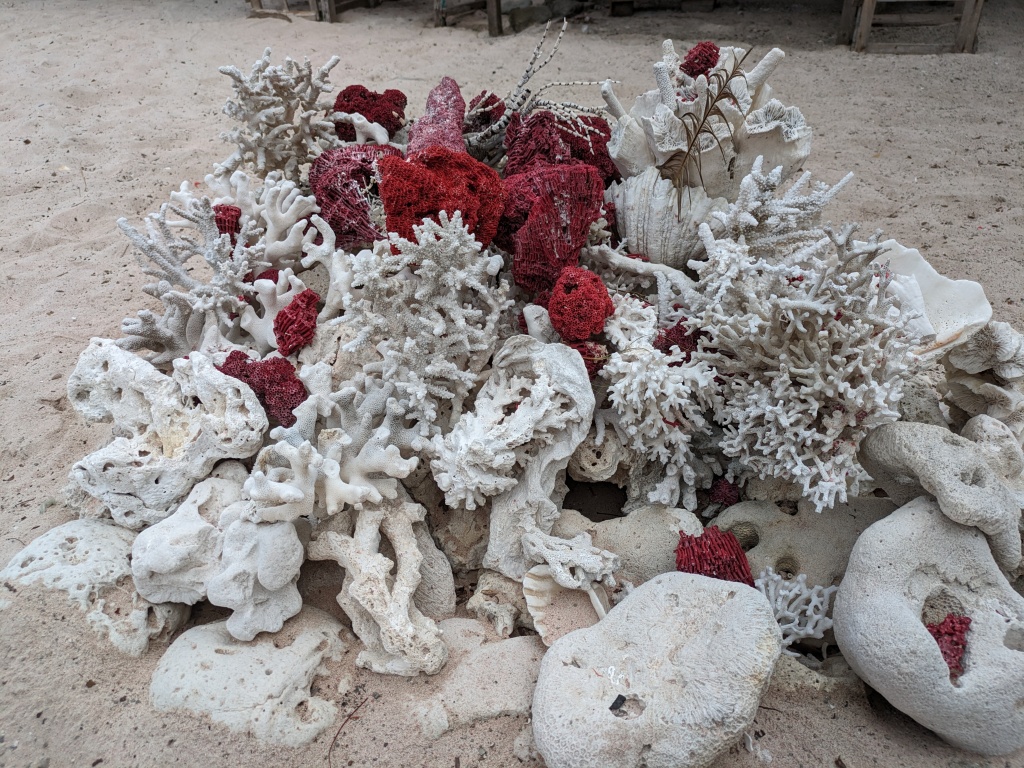
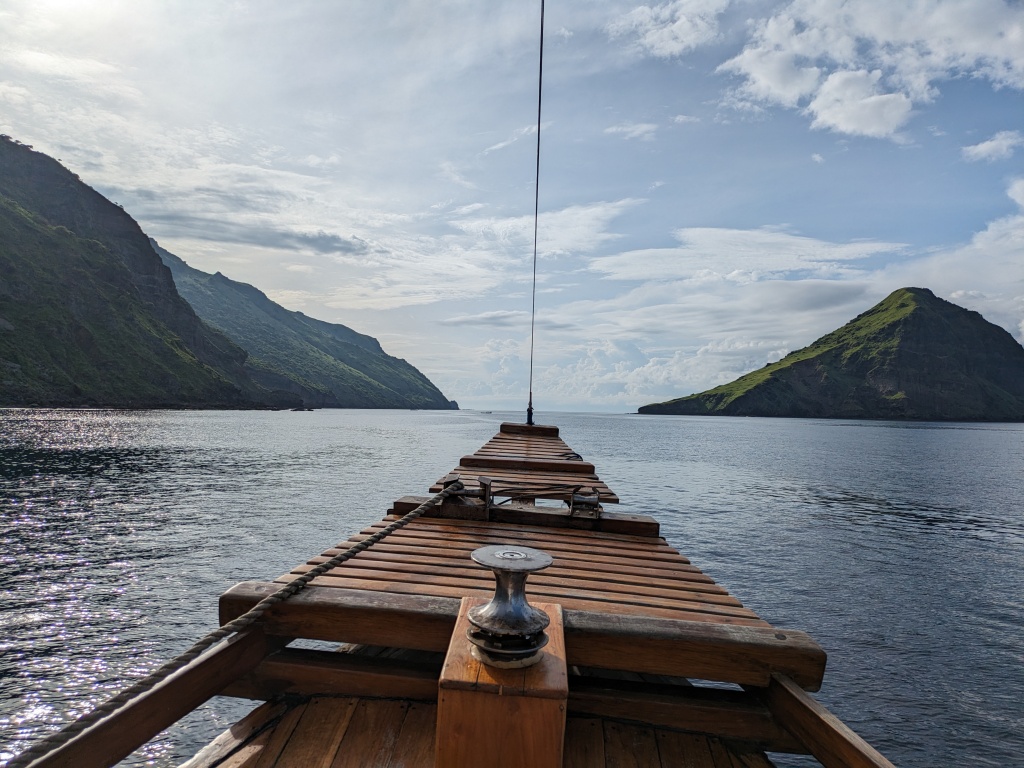
In addition to a stop on Komodo Island, we also did a short hike on Padar Island. About 20 minutes of stairs lead to a lovely lookout where the famous shape and bays of Padar are clearly visible. Padar’s many beaches are interesting because they actually feature three different colours of sand: black, white, and pink. See if you can spot them in the photo below.
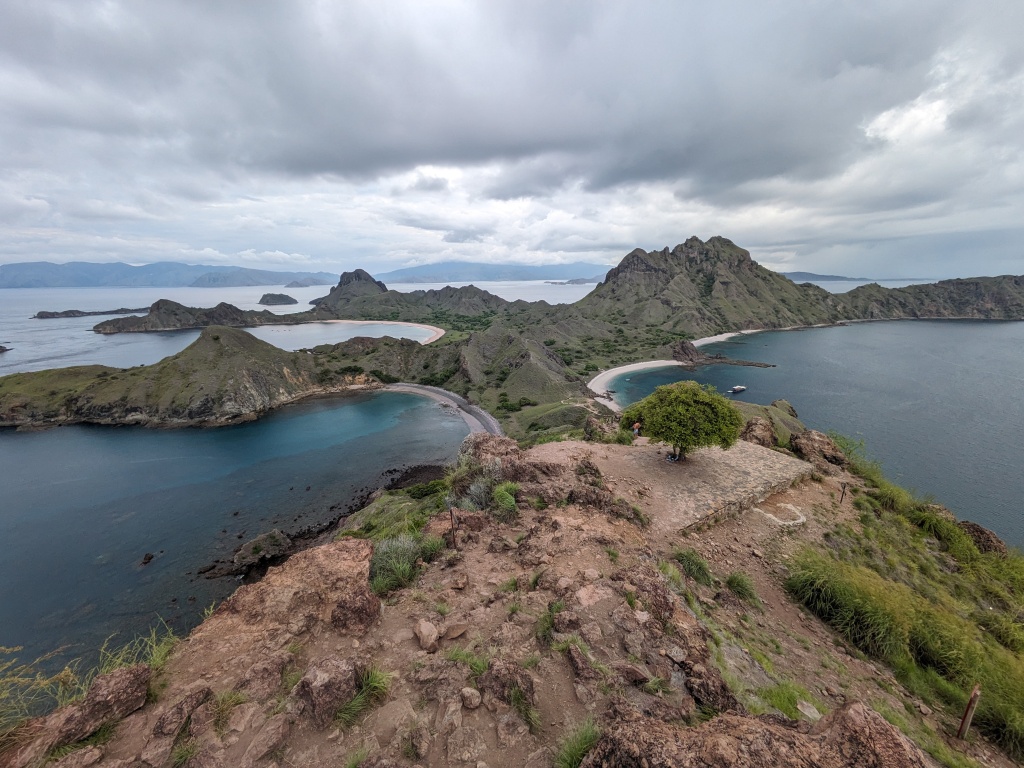
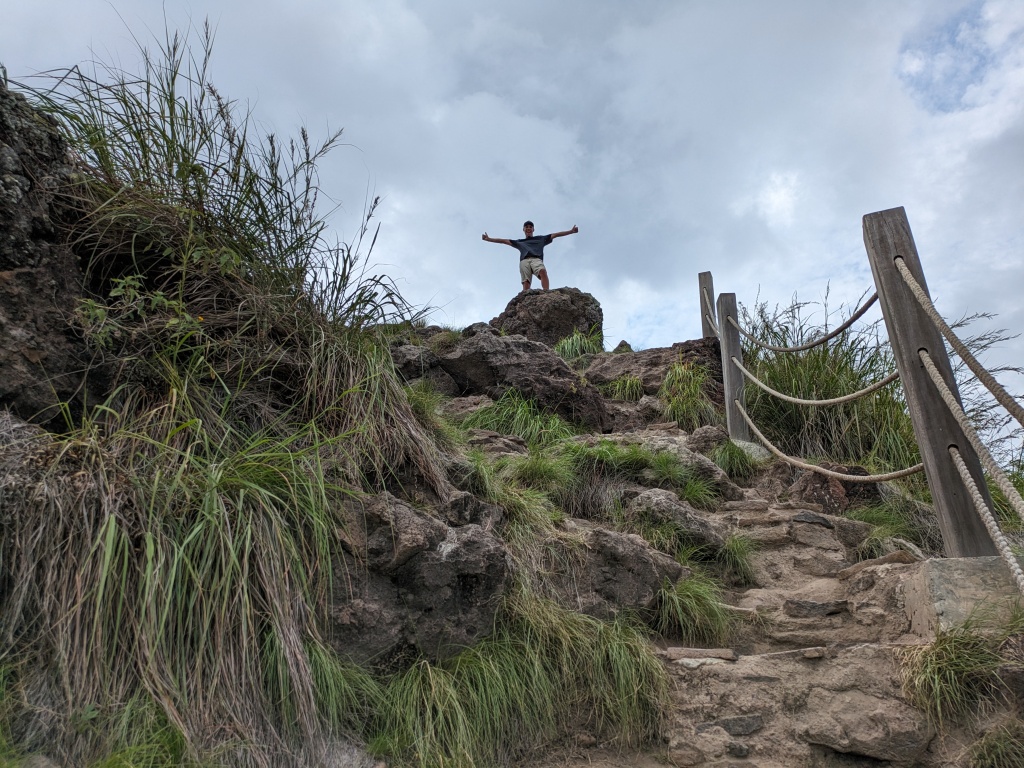
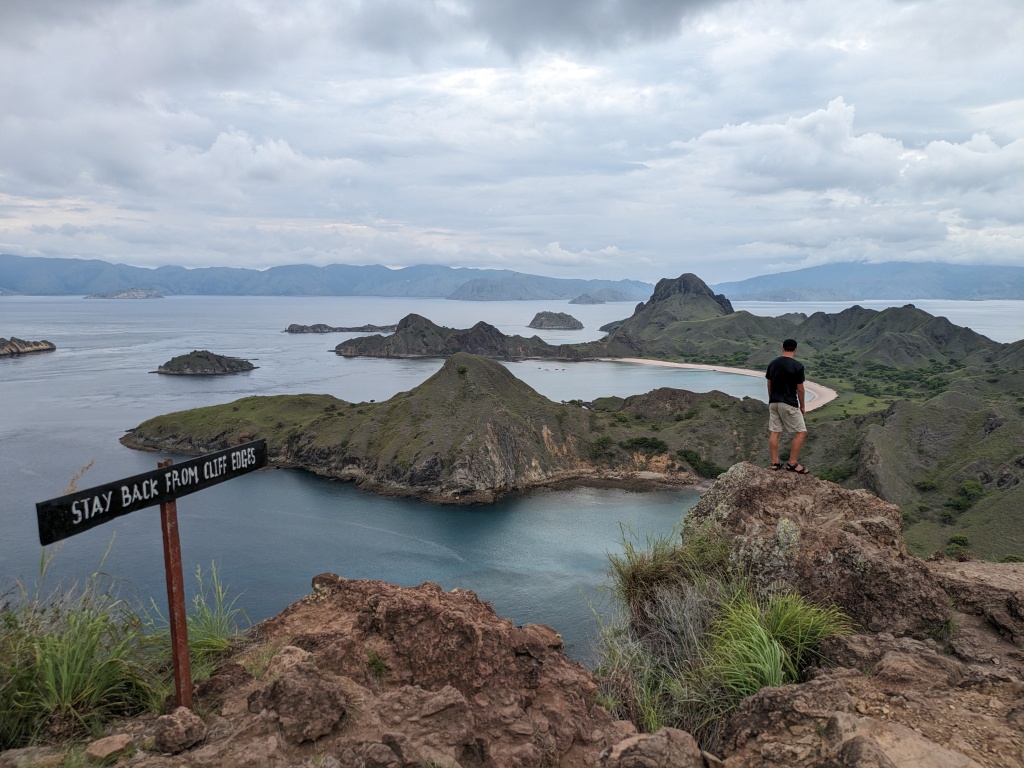
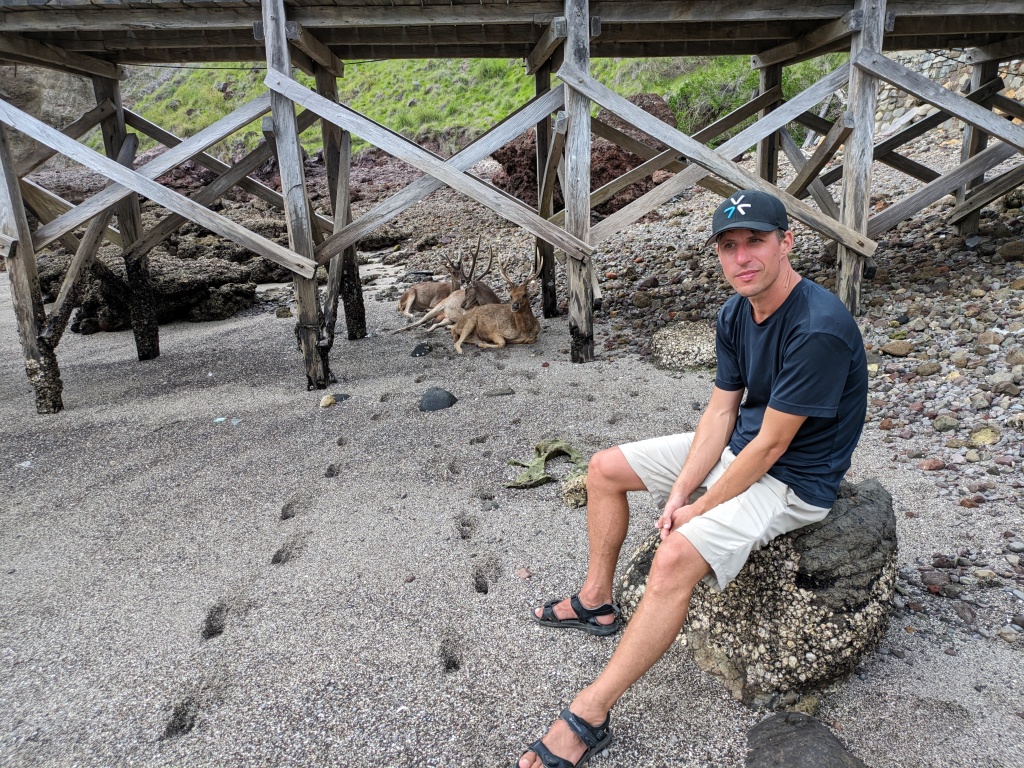
After 4 amazing days aboard Amalia, we were dropped off again at the harbour in Labuan Bajo. We spent a few more days hanging out in town, waiting for our flight back to Denpasar. Once back on the island of Bali, we had a few more days to kill until our next flight to Nepal. As time was tight, we decided to make a standard tourist stop and visit nearby Ubud, the cultural center of Bali.
Ubud, Bali:
While the white sand beaches of the islands were magical, there was something refreshing about being back in rainy, lush Bali. This island has its own colours: dense green jungle and the rusty orange sandstone of Hindu temples. We spent 4 days in Ubud, in the center of the island, exploring some of the famous sites, coffee shops, and trails.
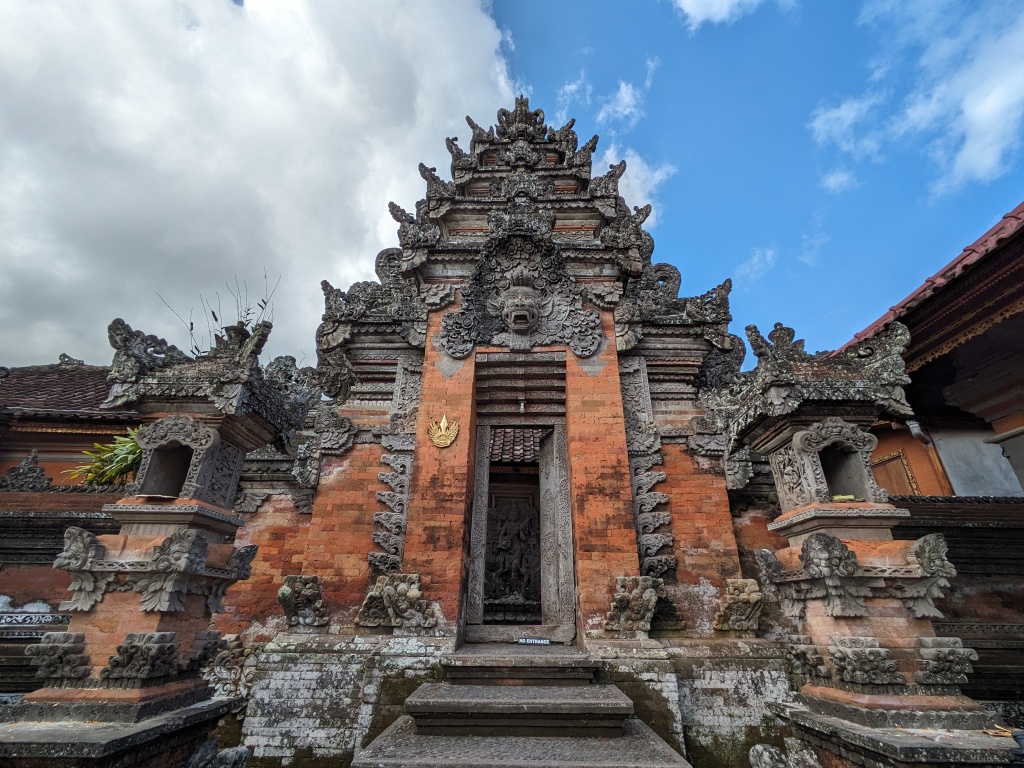
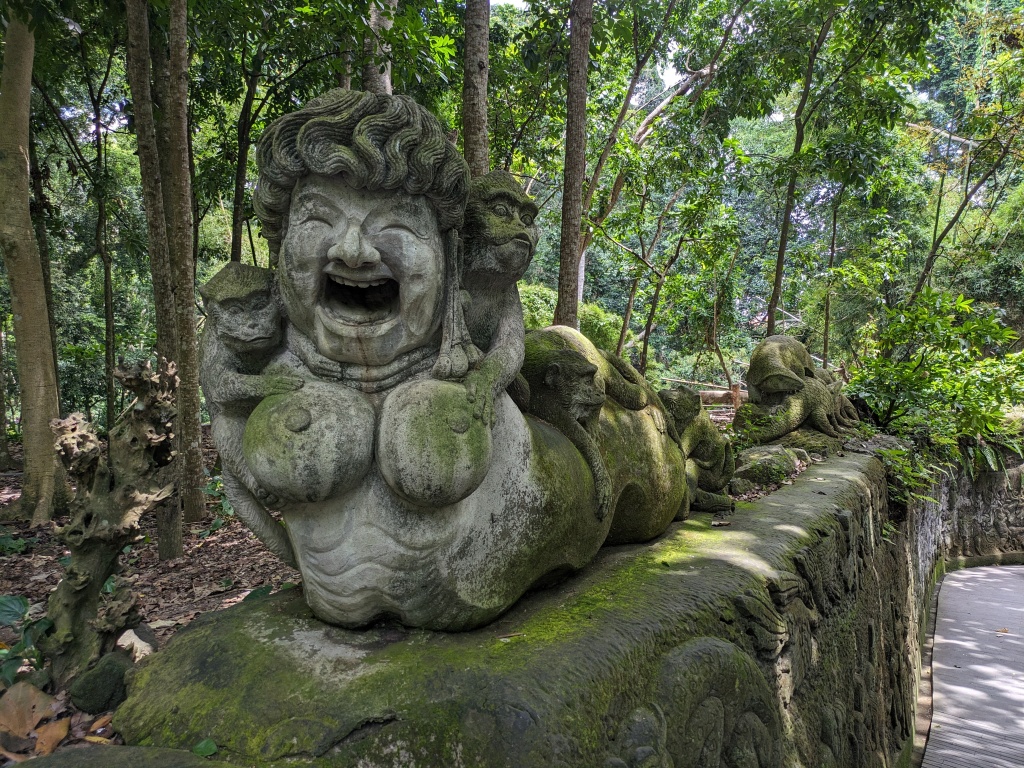
One of my favourite stops in Ubud was a visit to the Monkey Forest, a park within walking distance of the downtown. The park features many pleasant walking trails, dozens of interesting statues and small temples, and over a thousand long-tailed macaques living in groups in different regions of the park. They are not shy, and their antics, plus the lush greenery of the park, are definitely a highlight of Ubud.
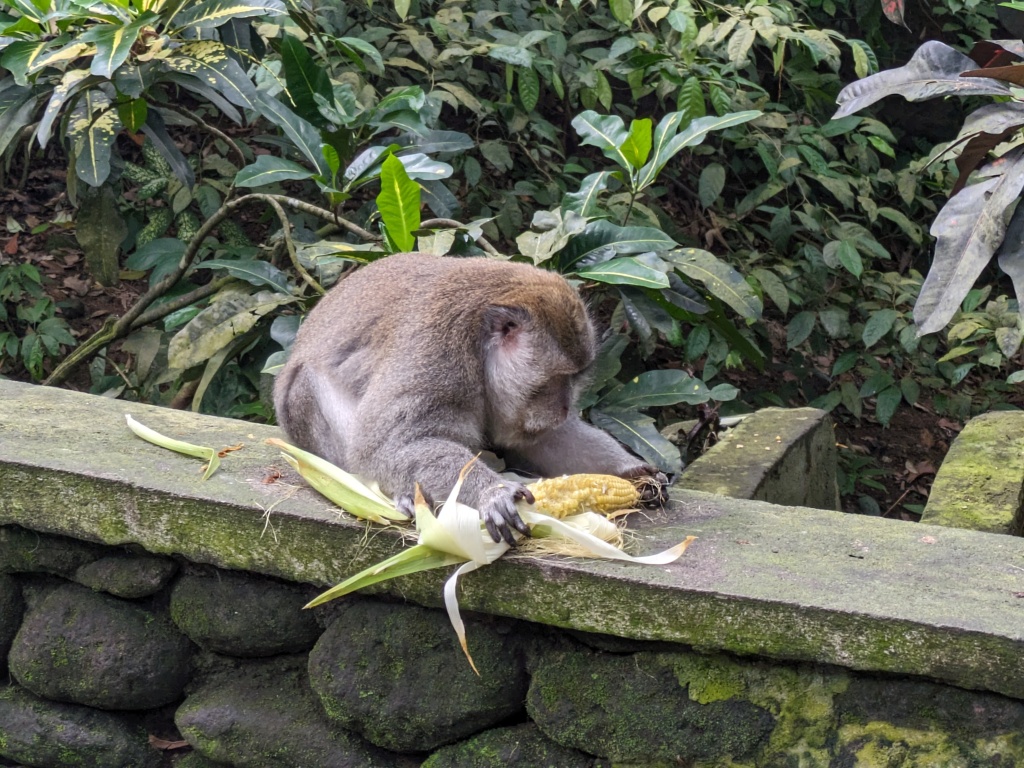
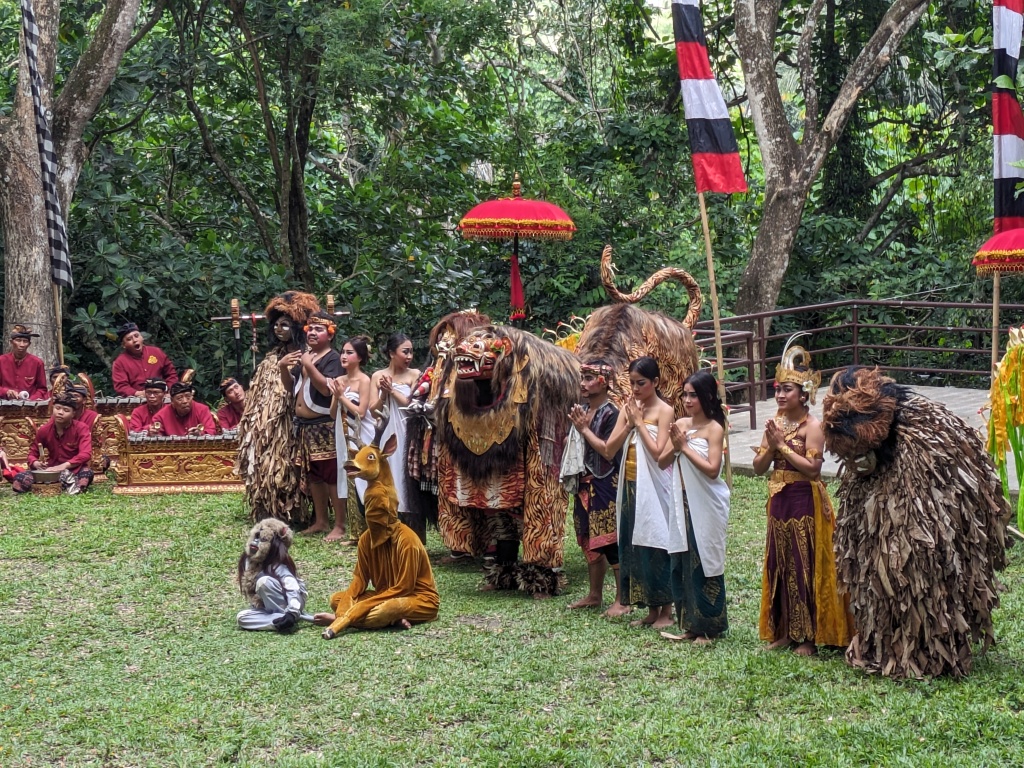
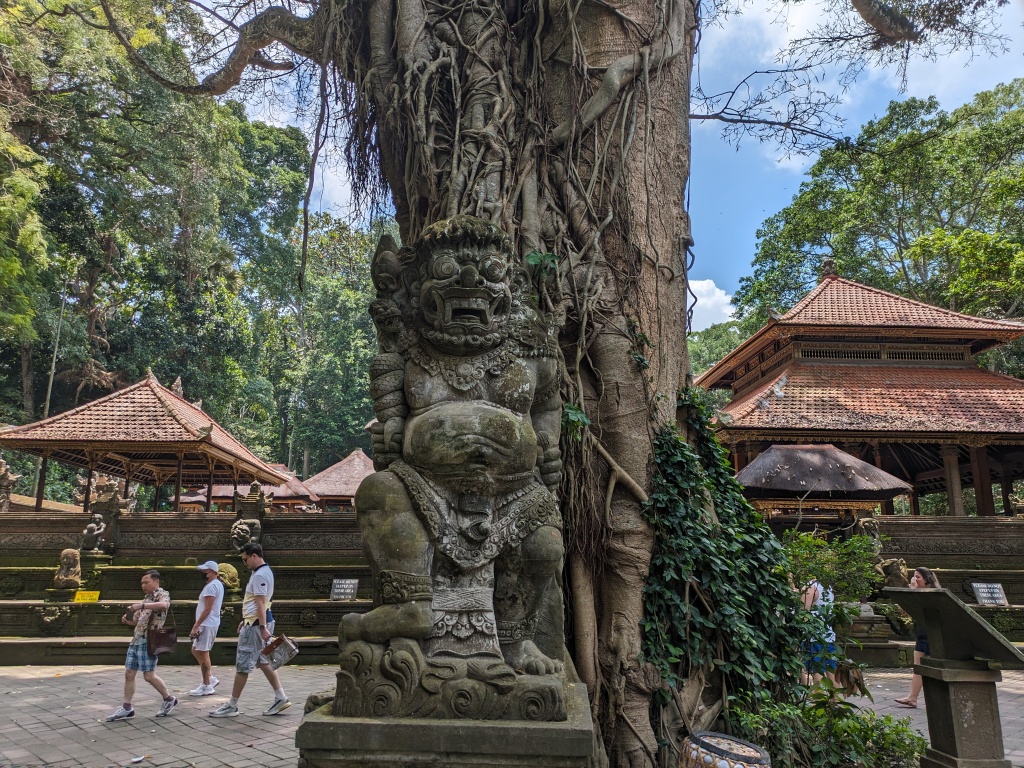
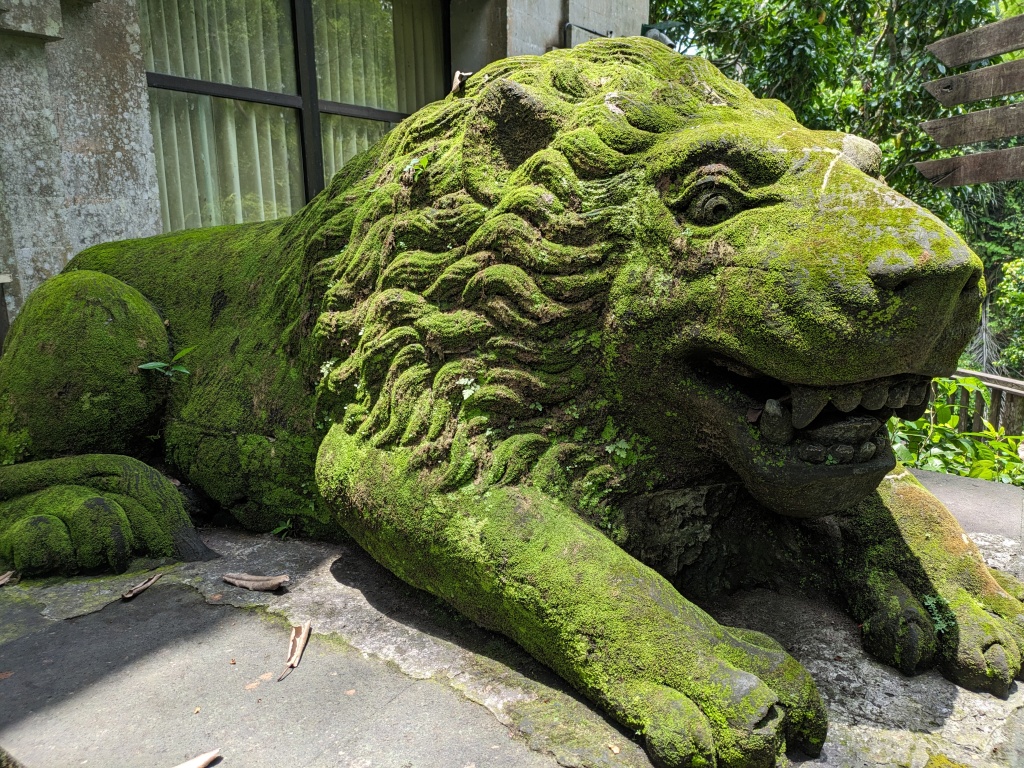
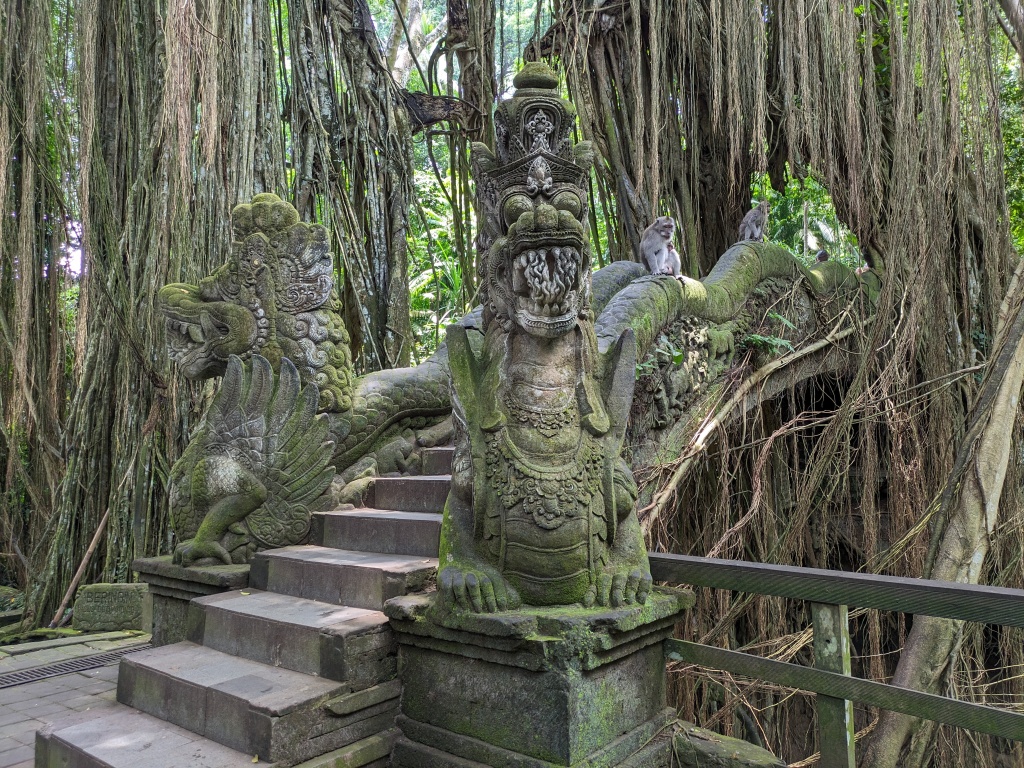
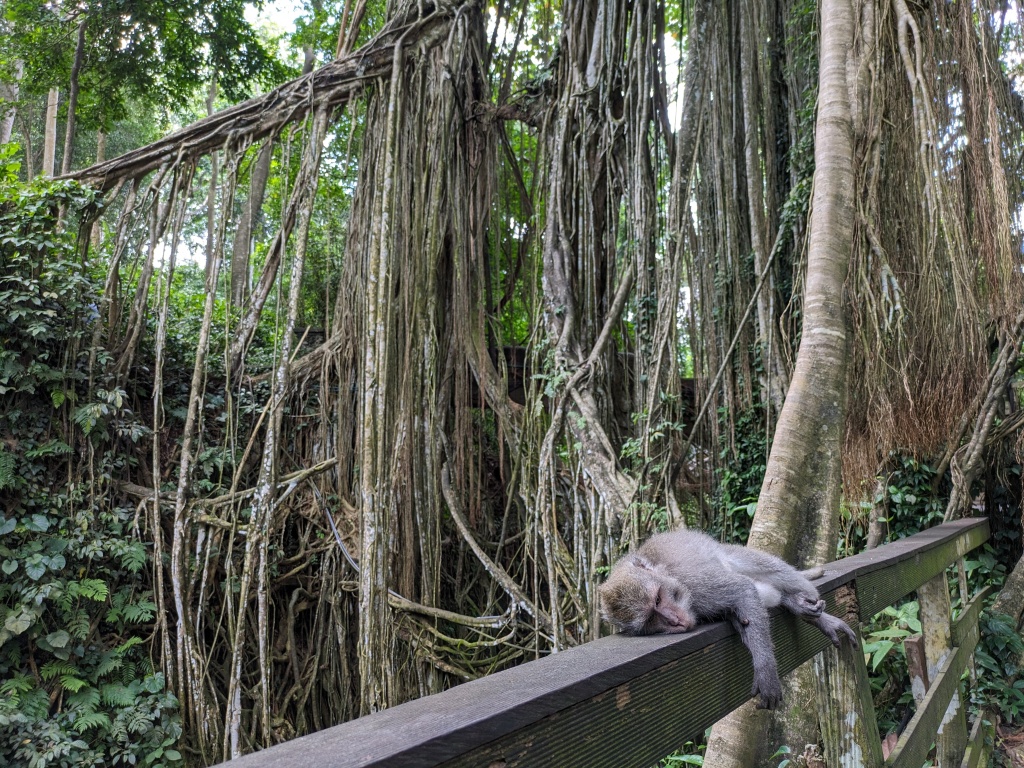
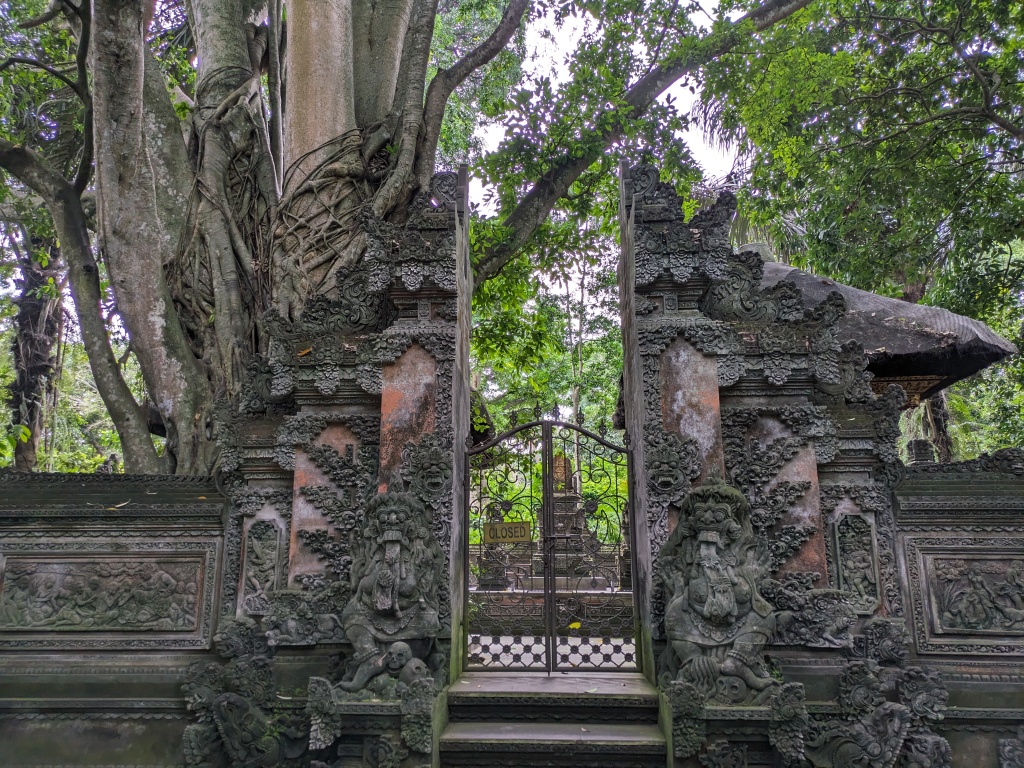
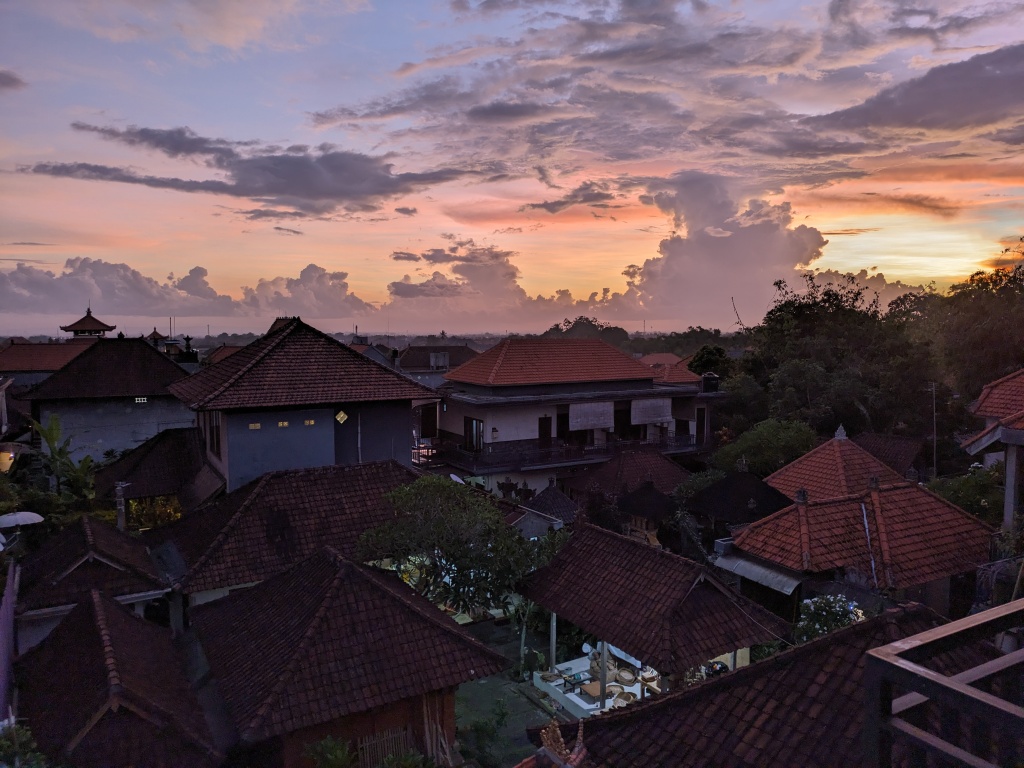
Ubud was the most touristy place we visited during our month in Indonesia, but during the off-season, it wasn’t uncomfortably busy. And I am a sucker for a good cafe, which Ubud had in spades; local coffee and coconut ice cream won me over pretty quick. While the food at the western places was overpriced and not great, we did have some really tasty, affordable meals at the Indonesian restaurants in town. I wouldn’t dare visit in the high season, but I’m glad we spent a bit of time here on our trip.
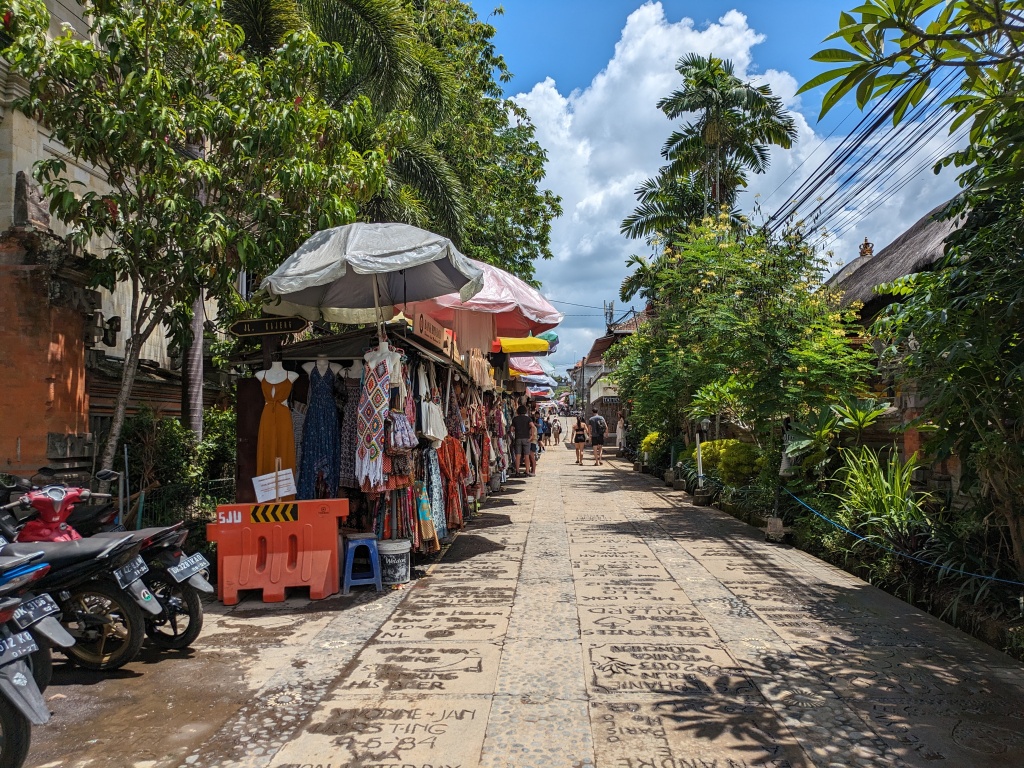
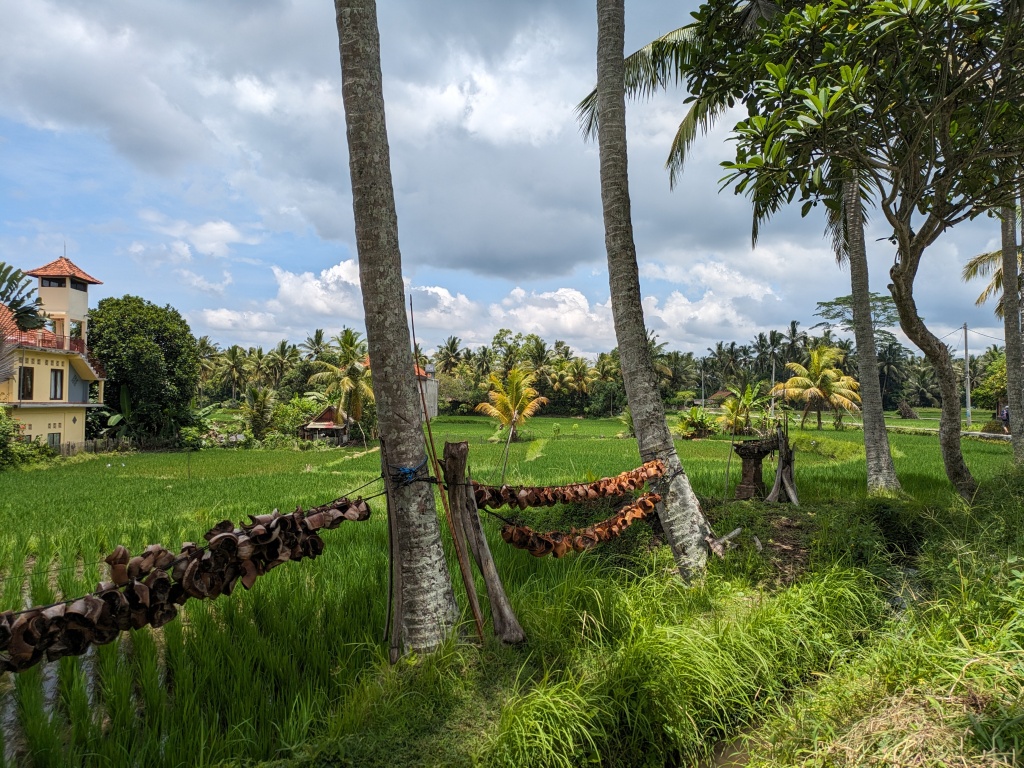
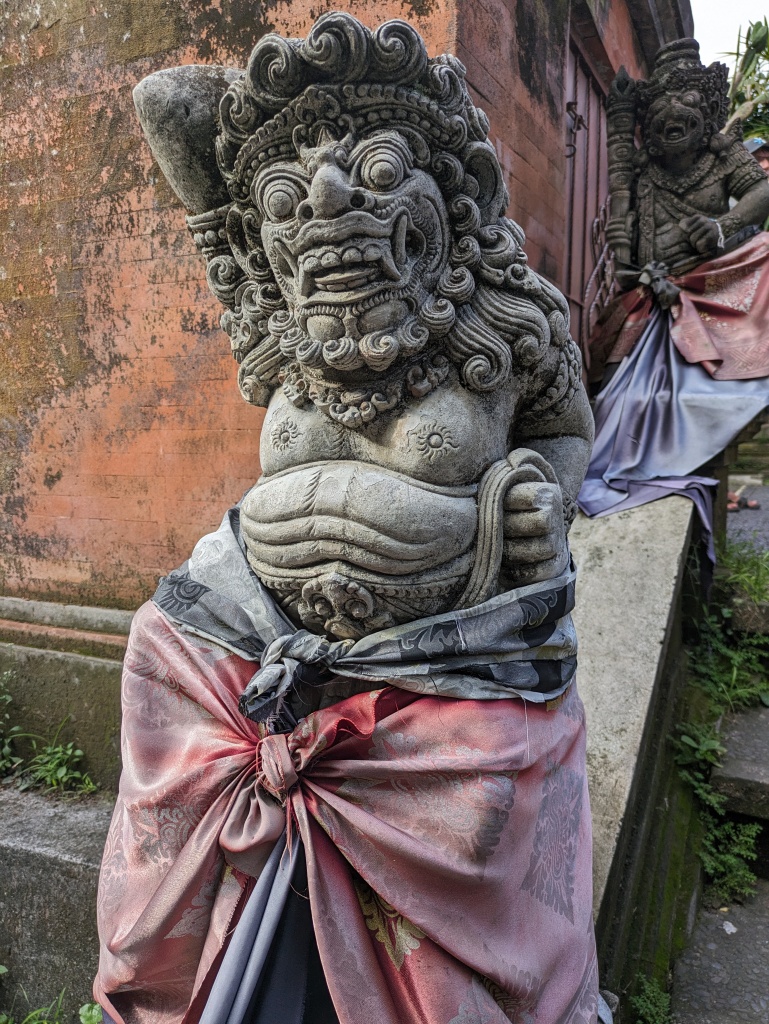
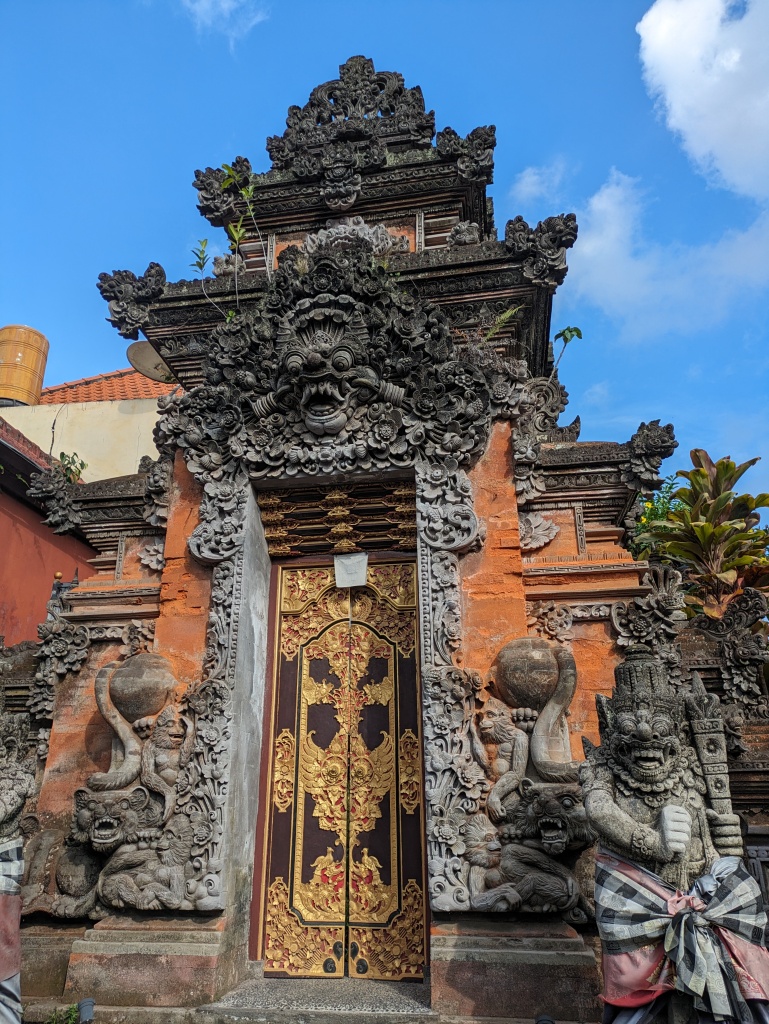
With our Indonesian visas now at an end, we set our sights to our next destination, what would be the final stop on the Year of Adventure: Nepal, and the towering mountains of the Himalayas. Save the best for last.


very interesting place, Love the Dragons. The pictures are awesome.
LikeLike